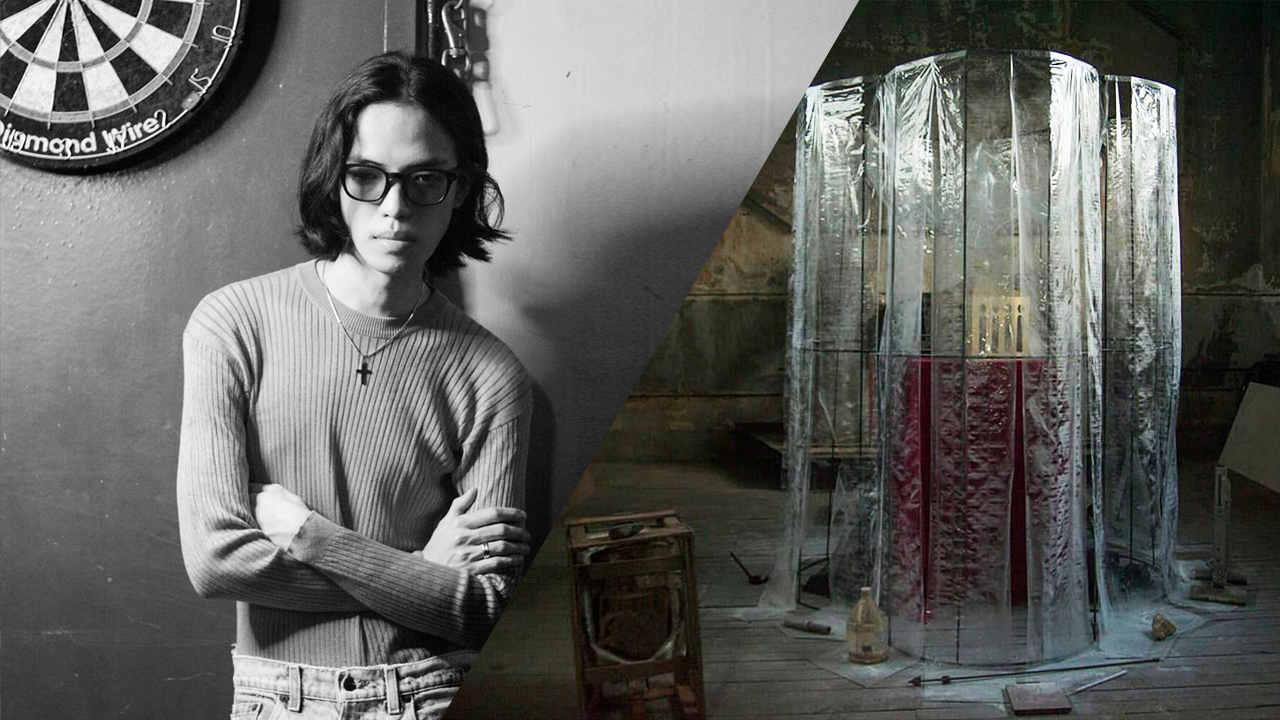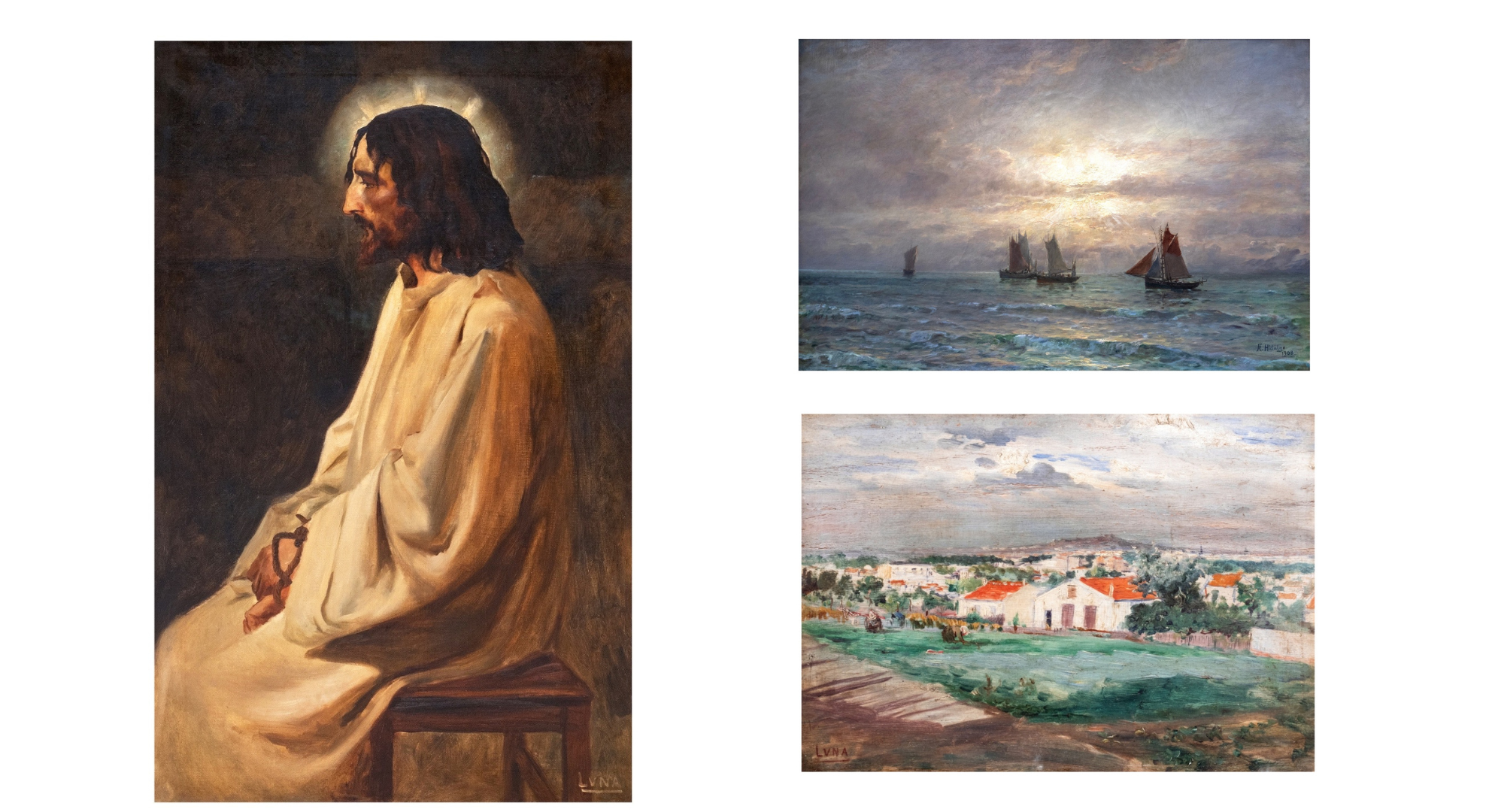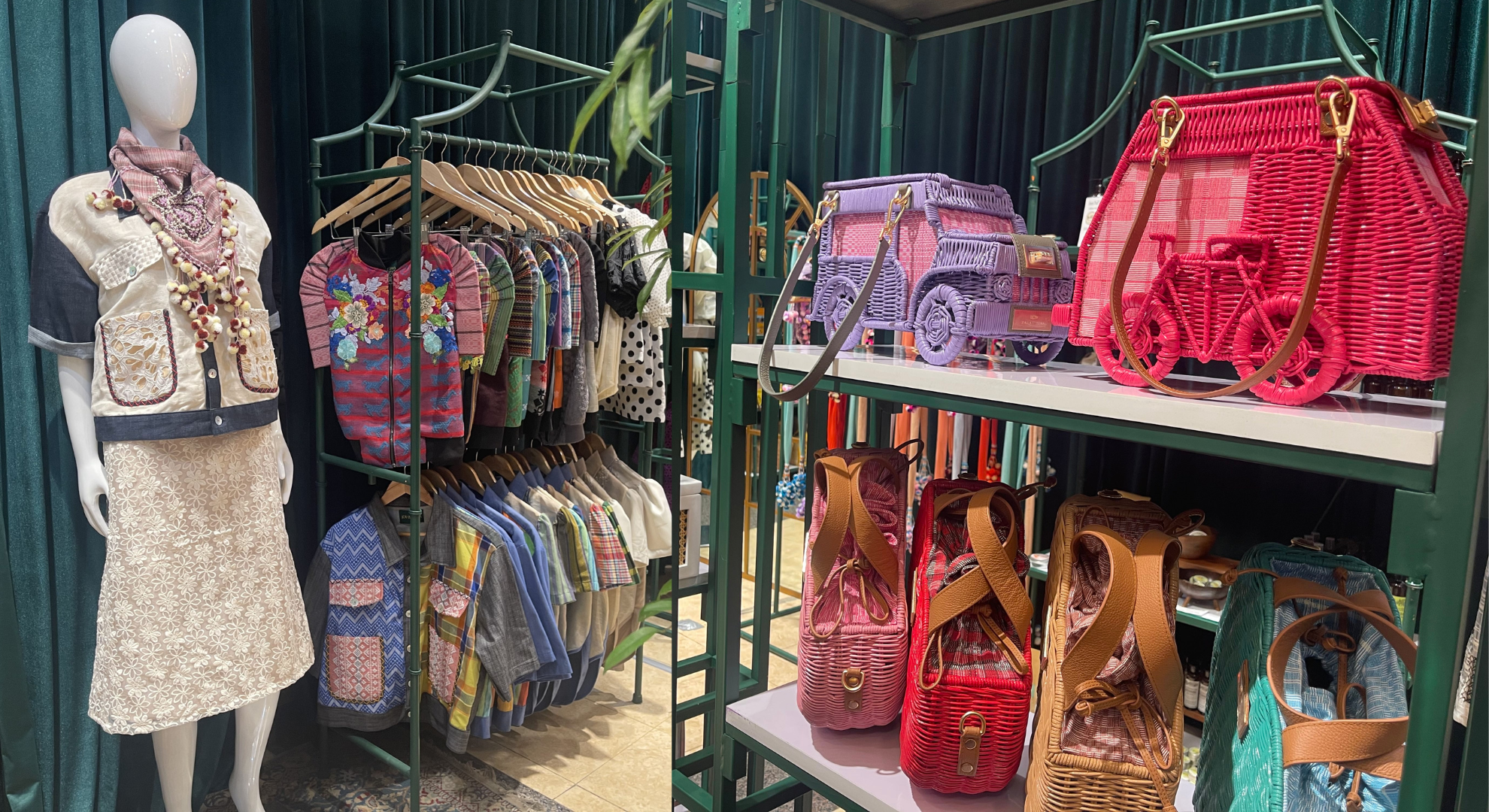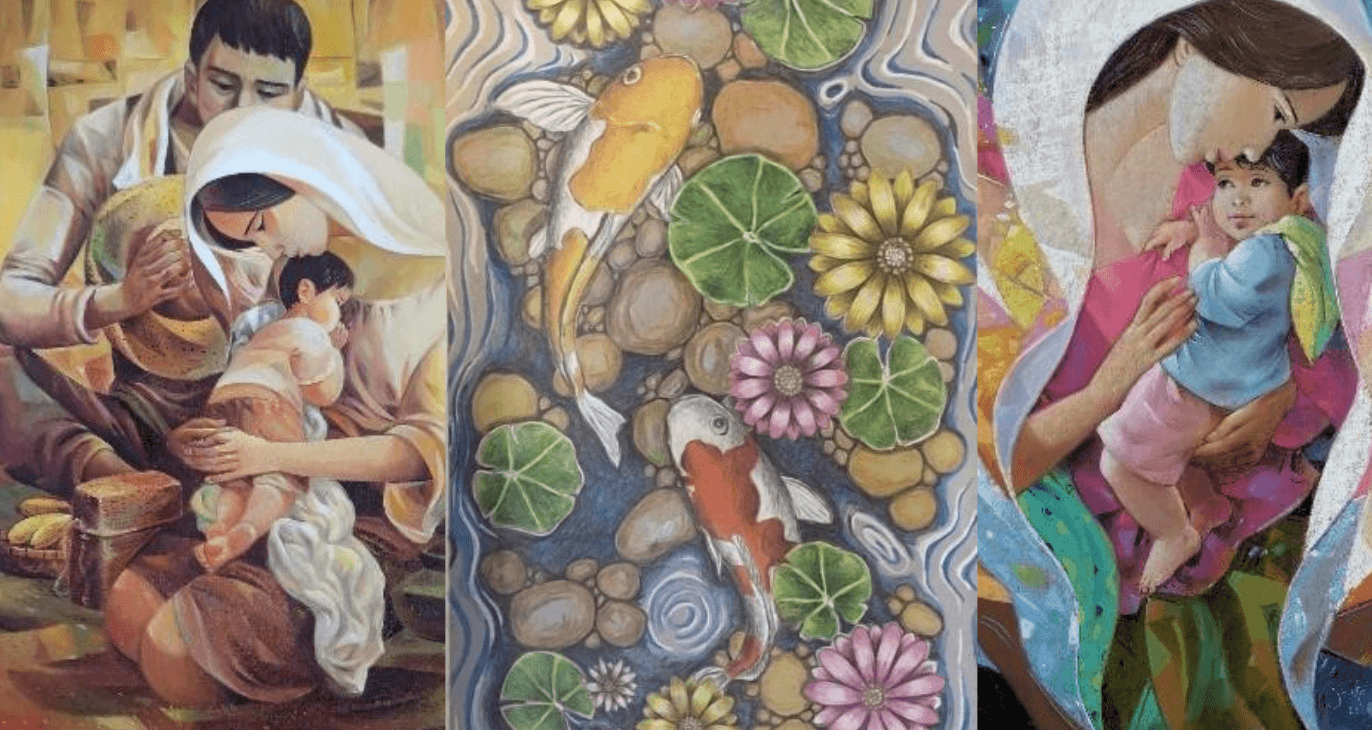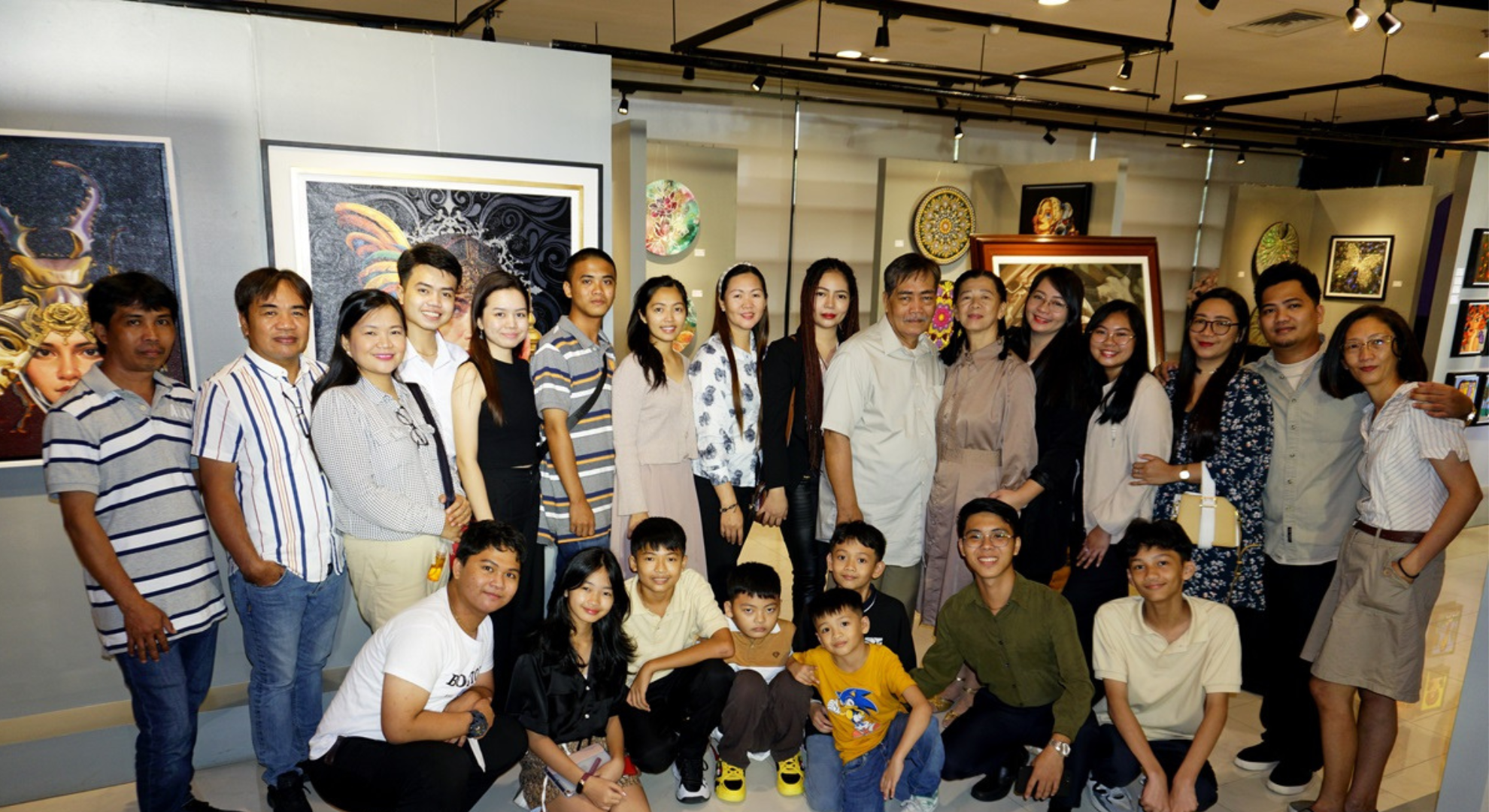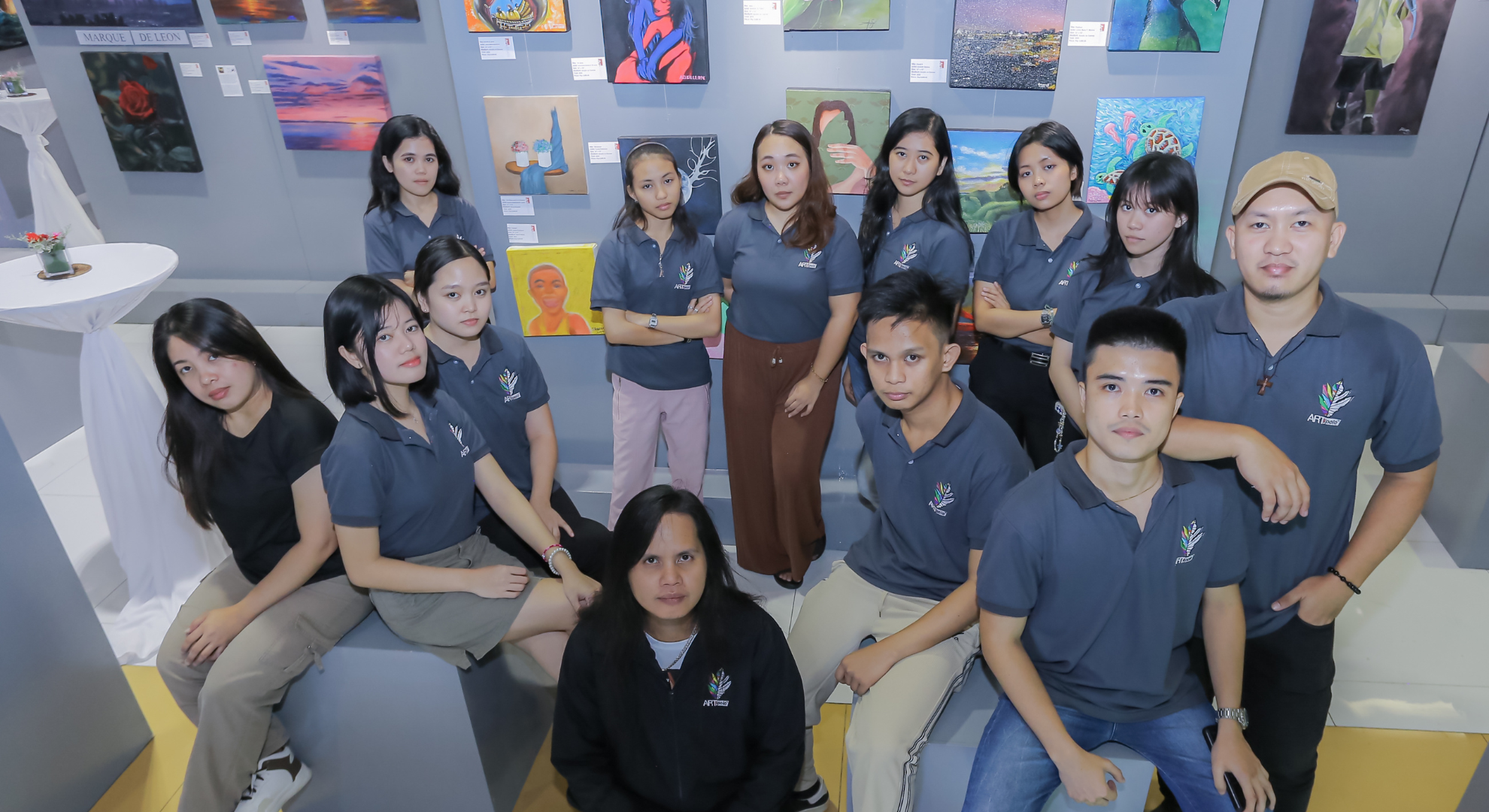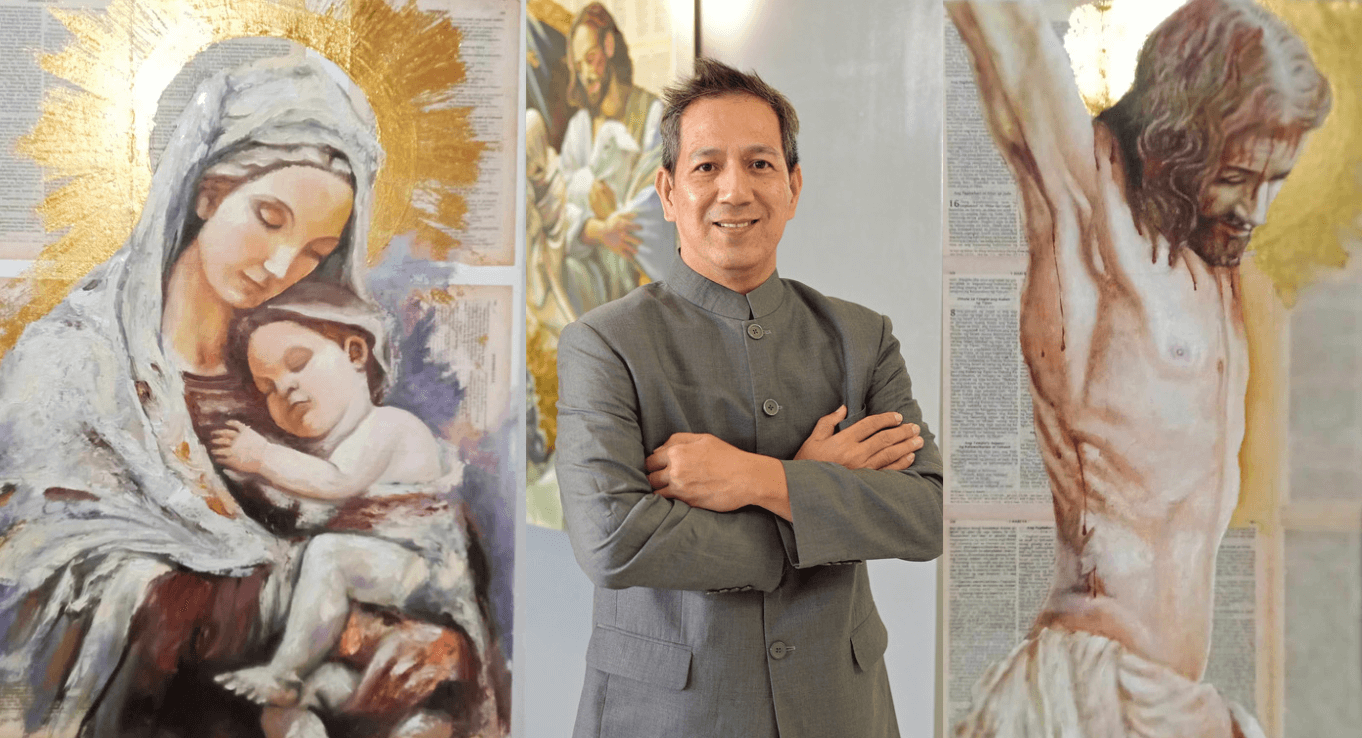In this episode of Artists Talk, artist Jed Gregorio is interviewed by Gabrielle Gatchalian, independent curator and international liaison for artist-run organisation 98B Collaboratory, about Gregorio’s young yet distinctive body of work, including the 2019 exhibition “New Frontiers in the Evolution of the Blood of the Immortal Poets” and his latest work “Godhood”, recently shown in Kyoto, Japan.
Listen to the podcast and see the transcript of the interview below.
Welcome to this episode of Artists Talk.
This is the voice of Gabrielle Gatchalian, recording from New York City.
This conversation with Jed Gregorio took place via a series of Zoom calls in September, 2020. This recording is composed of three sessions combined — the first recorded on September 10, the second in September 12, and the third in September 18, Eastern Time.
To begin, allow me to introduce Jed Gregorio. He is an artist, filmmaker, writer, and poet. Presently he lives and works in Manila in the Philippines. In 2019, I worked with him as the curator of his first solo exhibition, held in First United, originally the Edificio Luis Pérez Samanillo, a pre-war Art Deco building in Escolta, Manila, recognized as an important cultural property by the National Historical Commission.
The exhibition, titled “New Frontiers in the Evolution of the Blood of the Immortal Poets”, is at the heart of a quasi-narrative, world-building project that has unfolded over multiple other exhibitions, screenings, and printed matter, both predating and succeeding the Escolta show.
The latest juncture in the “Immortal Poets” body of work is the multi-iterative piece titled Godhood, recently shown in the Kyoto City University of Arts in Kyoto, Japan.
The following conversation is the first in-depth interview with Jed Gregorio about his practice and body of work, since actively pursuing exhibitioning in 2017.
The first time we met you were working on [the work The Incomplete Rock Catalogue] at 98B Collaboratory. From what I understood at that time you were new to doing art yourself. When did you get started?
The first work I exhibited was a work called Compost for the exhibition “Fuck Art, Let’s Dance!” It was a one-night exhibition in XX XX, a night club in Makati. I think what actually happened there was, I wasn’t really going to be part of it. A friend was invited to show work and I think he didn’t want to show work, so he told me about it. I had this idea of working with soil somehow, and when I thought about just the context of that whole show it just made sense in that setting because it was supposed to be dark, it was supposed to be loud. That work is actually directly related to the Rock Catalogue work because when I was talking to Maoi [Marika Constantino] for the 98B show, she invited me to show the work Compost. But then I told her it’s not going to work there. So that’s what happened, I had to propose new work. I had this other idea with the rocks, and that’s where that work came from.
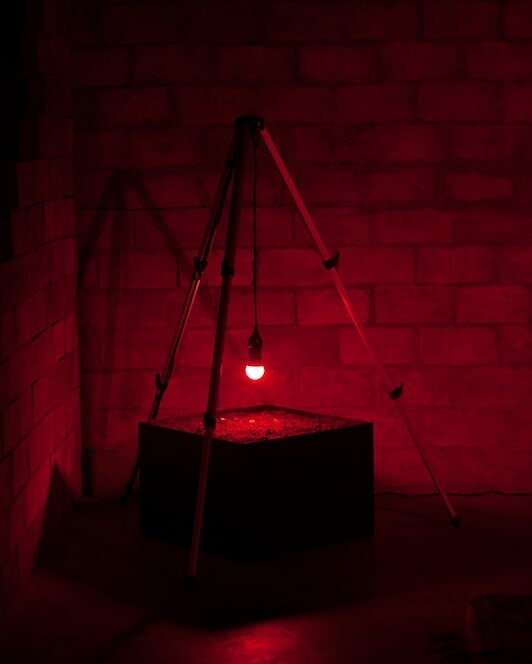
I only started pursuing exhibitioning as a practice in 2017. Before that I’ve been wanting to do it for a while, but I didn’t really know how to start, or I didn’t really know how to get into it. So what I did was since I had friends who were editors at CNN, I asked them if I could be an art writer. I wanted to write about art just as personal research for what’s happening. I’ve been going to some exhibitions, things like that, but I wanted to engage with it more formally. There were artists that I wanted to talk to, and have a reason to talk to. So that was useful. And it’s interesting because some people who met me for the first time thought I was a journalist or something, which I was, kind of. It was a journalistic enterprise in some way but the motivations for it were largely personal.
I really wanted to learn and just see how I could start doing exhibitions. Because when I graduated I mostly worked in magazines, and after a while of doing that it became clear to me that, as a kind of articulation or self-expression, just writing or publishing work wasn’t enough. It had to be something else. So, yeah, the ‘Rock Catalogue’ work was I think the second work of installation I’ve done.
A lot of folks who are in art have this idea that you have to go to art school. A lot of people have and ended up going that route in an attempt to pursue this. I think what quite a number of folks don’t know is there are other avenues and that’s not the only path you can take into it. And I think that their perspective, coming in from somebody who doesn’t come from that background like formally with a degree or anything, makes for a lot of variety, which is great. Did you ever think that you needed to go to art school at any point?
Well, you know, my background, I did have a Liberal Arts education, it’s not like I had a science degree or something like that. So a lot of what I know come from that background. I guess it’s different from, let’s say, a Fine Arts degree like a Studio Arts degree, that’s not the kind of engagement I’m familiar with. In terms of approaching my work now, it has of course a lot to do with the education I’ve had. I studied film in college so a lot of that is also what I do now. If you think about it I didn’t not come from an arts background, I think that’s kind of like a misconception, because I kind of did. Not the Studio Arts that I know some of my friends did do. And I think it was useful. I learned a lot studying philosophy and humanities and things like this. I would recommend it, if anyone asked me about that.
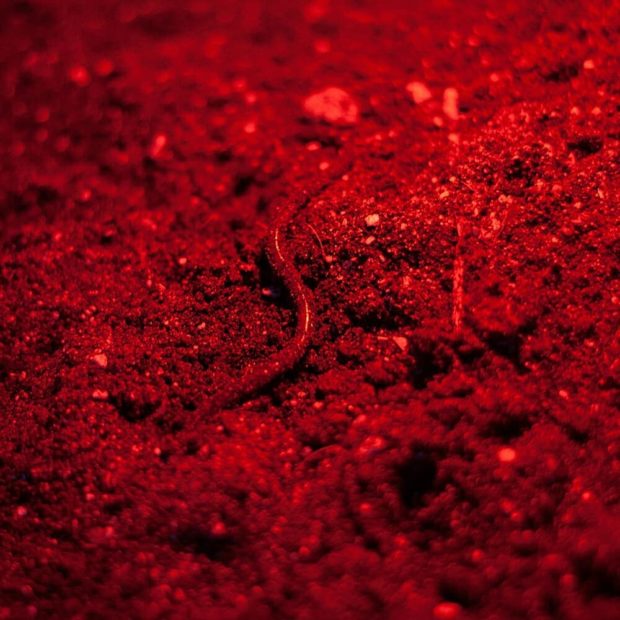
The Rock Catalogue work, was that something that you always had an idea for or was that more of like a response to a prompt that you were given? Because you were saying you were invited to show another work.
The Rock Catalogue in its final form in Escolta was a response, but the idea for it was much earlier on. Because I sketch ideas, I draw almost everyday. These are usually ideas for either composition, some are ideas for films, some are ideas for photography, and then some are models for installation. And I’ve had this idea for a while of rocks, or basically rocks on a shelf, or some kind of display device. Actually the earlier idea were a lot of much smaller, more rocks, and when Maoi showed me the spot I was going to be given to mount the work, that entrance space in Hub, I thought the sculpture had to be much bigger, and it had to be a much bigger installation because it was going to be the first thing you see when you enter the exhibition space. That’s how the final form of it developed, I knew it had to be a much bigger shelf than I first planned, they had to be much bigger rocks, and because they were much bigger rocks they could be fewer rocks. Thinking about it as a kind of display specifically in that spot, that’s how the composition of it came about, like with the four lights illuminating it from the sides.
What was the idea behind it?
I mean even me I have a hard time trying to figure out where some ideas come from. Because I think there are so many ways that you can talk about that work. I remember someone specifically commenting that it’s derivative of an Arte Povera sensibility, which I guess you can look at it that way. I think at that time I wasn’t even aware of that. But one way you could also look at it was the work of someone starting out, or someone trying to work with material, or someone trying to have a familiarity with material. If we were talking about materials I knew that it wasn’t going to be paint, because I don’t really have a relationship with that as a material, or canvas. I really had to think of it more in terms of what belongs to me, or what I feel comfortable working with.
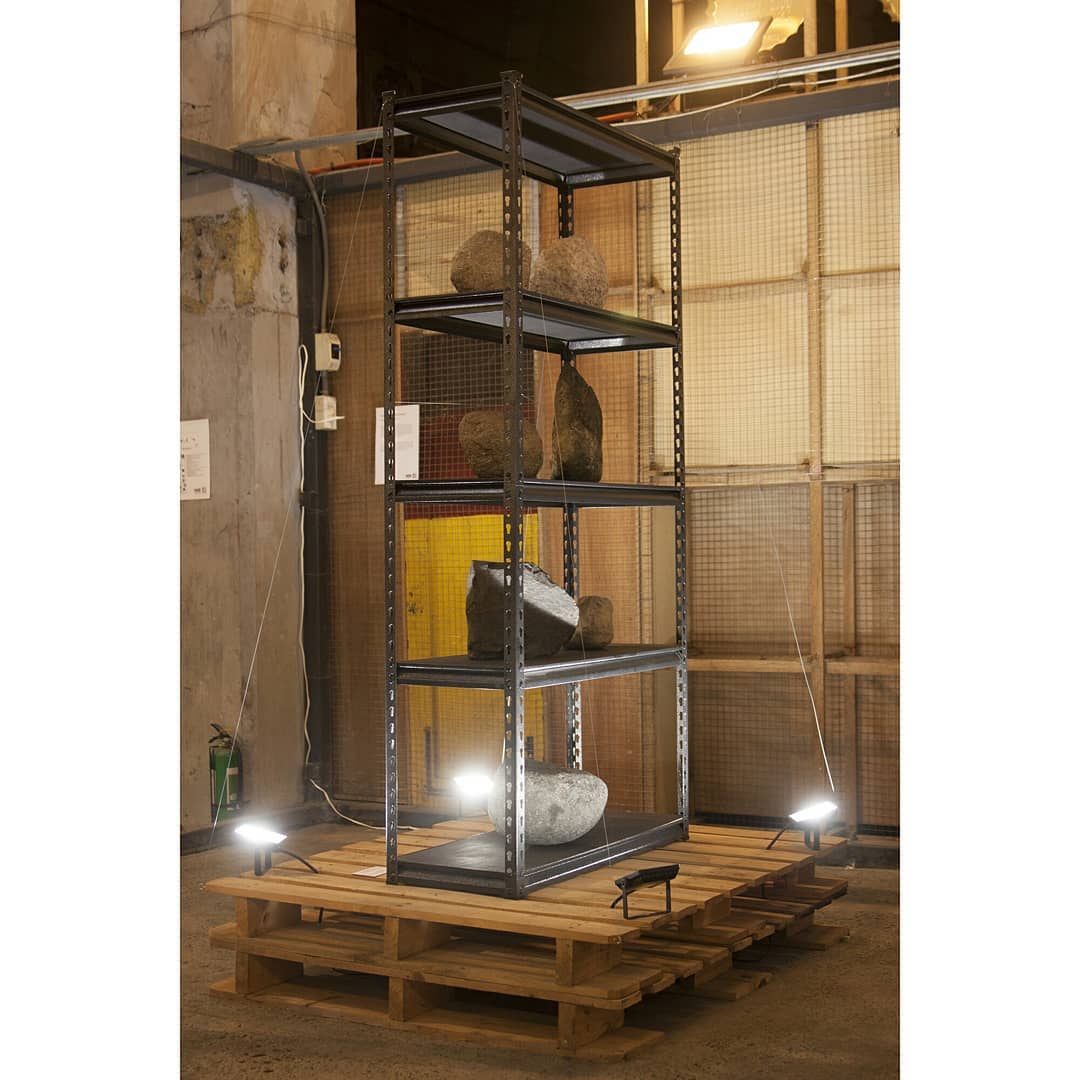
If you look at those two works, Compost and Rock Catalogue, that it’s soil and rocks, with a component of light, electrical light. I just thought I guess at that time that these were things that did not belong to anyone in particular, or belongs to everyone. And these are things that you can kind of claim ownership to, and at the same time not. Another part of it is also the availability of what I was working with. Honestly I didn’t have a lot of money that time, much of the money went into transporting it, honestly that’s where the money went, not really the thing itself. Some of those I already had or I asked from people, like the wooden pallets I asked from someone I knew who had them. So also there’s that idea of the availability and its being free. For some reason I was conceptually drawn to that idea that I didn’t have to spend, or I could claim ownership to an idea without really having to spend money to buy what needed to be built. That was the background of the work. What I proposed about the work is like an entirely different story. This idea, how do you pitch it, right? How do you explain that you want to put rocks on a shelf for an exhibition? I mean it’s hard, or at least I couldn’t find the words to justify it. So I had to come up with this quasi-narrative about what it was.
That’s where the idea of the “Rock Catalogue” came from, because one of the things I wrote in the proposal was this would be a project that would catalogue all of the world’s rocks, and these are just seven of them, and that’s why it’s “incomplete” because the “Complete Rock Catalogue” has yet to be made. Because of that proposal that’s where the lecture-performance arose. The lecture-performance was a way of talking about the work, that fictitious endeavour called the “Complete Rock Catalogue” and what it would take to accomplish that.
Contrary to what maybe some folks might think, and this is what I thought also when I was getting into this, it’s a lot of finishedness when it’s not. A lot of this stuff is sort of a process ongoing and just discovering what works and working around interests.
Yeah, I’m actually amazed at people who have very clear-cut plans about stuff because if I knew… I mean, I kind of knew what I wanted, but at the same time it’s like, you wake up the next day and something could be different. I feel like the art should be able to be as complex and also in some ways as chaotic as the human that initiates it. I wasn’t really thinking of categories where it would fit. As the person looking at the art, you can make evaluations of it based on however many criteria you want that suits your agenda, but as I said, as an early work for me it also had this symbolic function of functioning as a kind of manifesto, like laying the ground for what I plan to do and what I want to talk about. Starting with the soil and the rocks, if you think about it it’s a very literal notion of a bedrock, or laying the foundations, literally.
It’s quite Genesis!
Yeah, right. What I was thinking about during that time, for example with the work Compost, it’s like my first work but in many ways it will also be the last. Because that’s how we all end up, as worm food. It’s kind of prophetic of everything.
What sorts of interests drive the work? Because we’re looking at the soil and the rocks, and we haven’t even gone to the other things yet, but here already it’s a lot of stuff that has to do with Earth.
With those two works the way I see it is that they have something to do with the Earth insofar as everything is on Earth. I think I’ve told you before that, for example while doing the Rock Catalogue, of course I was reading a lot about Geology, but at the end of the day it’s not really about Geology because I’m not a scientist. At least the Rock Catalogue—because you’re talking about interests right—as a thought experiment, began there. Because the question is, how do you accomplish a “Complete Rock Catalogue”? How do you catalogue all of the Earth’s rocks, considering that the rock cycle is continuous and rocks break down into a million sediments? So basically what would a hyper-live, hyper-responsive “Rock Catalogue” look like?
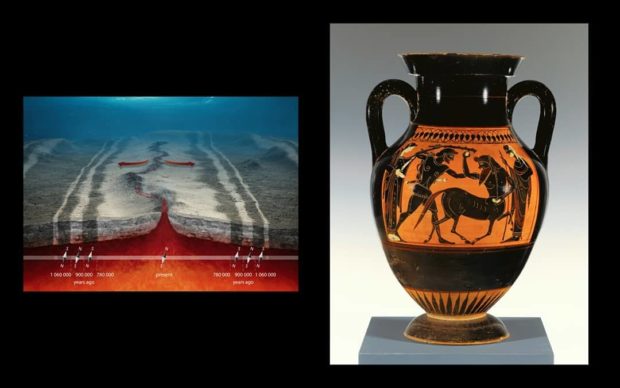
One of the things you might think about is that it’s impossible, right? So as a thought experiment one of the things I had to think about was to prove it’s possible. One of the ways I talked about it in the lecture-performance is to prove that it’s not infinite, because the Earth is one piece of rock. If you have a big enough box you can fit the Earth inside it. So if you can fit the entire Earth into one box it means it’s contained, like the entire Earth is its own “Complete Rock Catalogue”. Step number one was to prove that it wasn’t infinite. Because I was able to establish that, this infinity aspect, or in talking about how the infinite is embedded inside rocks, or in talking about rocks I can talk about infinity, it dawned on me basically that I can talk about anything! In talking infinity or this eternal boundlessness, I can talk about anything I want.
To answer your question about interests, it’s anything I want! That’s what I meant about the Rock Catalogue functioning as a kind of manifesto, because as one of the first works I’ve done, at least for me personally, what that said was, after this I can talk about anything.
It’s definitely where the humanities background comes in, it’s the positing of questions, which is certainly a good way to approach the work, not as objects that need to be finished but as questions to be asked.
Yeah, but also my other point is that even as an object at least I think there’s something compelling about it. One of the things I got asked was, “Are they real rocks?” It was so funny for me because I honestly can’t make fake rocks, I don’t know how. So there are these fascinating ways of thinking you can engage it with, but I honestly don’t think they’re necessary. I think as an object, as a work, there’s something about it that, at least for me, if it was pure concept it wouldn’t have been as fun. Working with those rocks, especially on my own, was really so much physical endurance. So I think at least it’s important for me to engage it both ways. The Rock Catalogue is on one spectrum like a thought experiment, but also on the other spectrum it also has to do with the fragility of myself, and how much I can carry, or the weight of the world, so to speak, that the work carries just be being itself, if that makes sense.
Are you much interested in science fiction?
Yeah, you know what, I think I’m going to answer that the same way, that I’m interested in science fiction insofar that I think everything is science fiction. Or at least the lens from which I view the world is that. The wildest conjectures we have about the future of humanity… I don’t know what to say, because I’m not really a scientist. I’m just a science fiction fan. I guess what I can talk about in terms of that is what I do like about science fiction is the boundlessness of the imagination. I don’t have many interesting things to say about that. Maybe later I’ll go back!
That’s plenty interesting. The boundlessness of the imagination. It keeps the work free, fun, and genuine, even. The last time we worked together, I was scouting locations for “New Frontiers in the Evolution of the Blood of the Immortal Poets”. And there you were also sort of trying to write a bit of a fiction.
With the “New Frontiers” show one of the main starting points of it was Escolta. I think that was really one of the main characters of that show, so to speak. I remember also, one of the things we really kept talking about during that time, I remember, was my grandmother. We did that in 2019, my grandmother died the year before, so she couldn’t have seen it. For me, I don’t now, there’s an affinity there. I have an affinity for Escolta both as a real place and also a fictional place. My grandmother was born in 1927, and the First United Building was completed in 1928. So I have this imagination of when my grandmother was a baby, there was also this structure rising up from the ground nearby, because we’re also from Manila. Just these connections for me are fascinating.
Or, for example, the fact that the architect of First United was Andres Luna, the son of Juan Luna. I know he was born in Paris, he lived there until he was six-years-old. He was born in Paris before the turn of the century, so you can only imagine Paris during the Belle Epoque, and what that does to a young boy. It’s something I could never know, and something I could only dream of. I guess I’m also fascinated by that very vague French connection inside the work, which, of course, I love. You asked about a fictional narrative… It’s fictional but it’s also bound with a history that’s far from fictional. Those are things that interest me, when these two things intermingle. Some of the most compelling fictions have such resonance with reality, and that’s what makes them great stories, because they could almost be real.
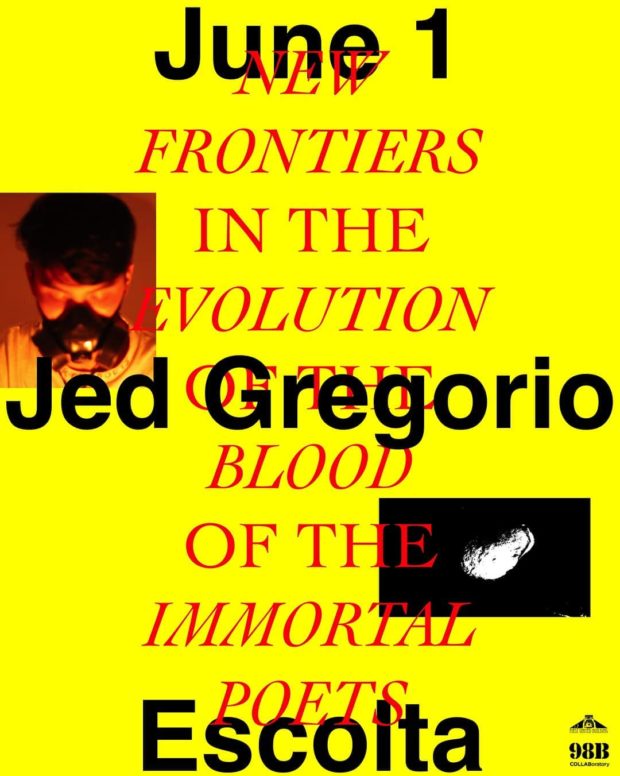
That’s something interesting to think about, those sort of alternate places and alternate timelines that we imagine, when we think about places, spaces, and moments that we were never in but can only imagine, both past and present. Like your Rock Catalogue work, that’s a bit future thinking if you think about it, because it involves those sorts of questions. When you look at the work you did for “New Frontiers”, here you’re thinking about a place that has quite a bit of a long past. You were also sort of dealing with the future with the work you were doing with The Documentarist in Miller’s Planet. I remember when you were approaching the tour, you were mentioning that a way to approach it was that the video work is something that you see as somebody from the future looking at a work about the past. That was some very interesting play going on there and it’s a way to engage, it’s a form of fiction, science fiction.
I guess another thing I like about science fiction or calling it that, or recognising it as a genre, is that it kind of belongs to the public in a friendlier way than contemporary art, I think. Just look at how many Star Wars fans you have. That’s one aspect of it that I like, its accessibility, its understandability. Because I think the “New Frontiers” show is not really science fiction. It’s kind of like science fiction that doesn’t have science. But if you do propose reading it as a work of science fiction, I think there’s something valuable there, because immediately it becomes accessible. You kind of start looking for characters, for example, or your suspension of disbelief… I don’t know, you dream more, you imagine more. As opposed to if you were engaging with a piece of contemporary art academically. It’s more fun. I think that’s what I like about it.
It’s interesting, too, Rock Catalogue was your second work and then “New Frontiers” comes a little bit after. So far it has also started to look like even up until that point, it’s as if the work that you do is a series, and I think I asked you before if this was something that you planned out, if this was something that was a continuing thought?
This serial nature of the work… I honestly want to say I planned it but I didn’t. Or the way I see it, a biography as an object is serial in its nature, meaning anyone who makes work after the end of their life, their body of work somehow forms some kind of series. And it becomes part of the world to look into that body of work and how they connect. In that way it is a series because I think everything could be read as a series. But I get what you mean, the work I did after the Rock Catalogue was this work called The Lover. And The Lover was really a conscious turn to make it intentionally serial. When I showed The Lover I knew it was just the beginning of something. With Rock Catalogue I wasn’t thinking about that, the way I thought about that work was as a singular project that I have to accomplish within this time.
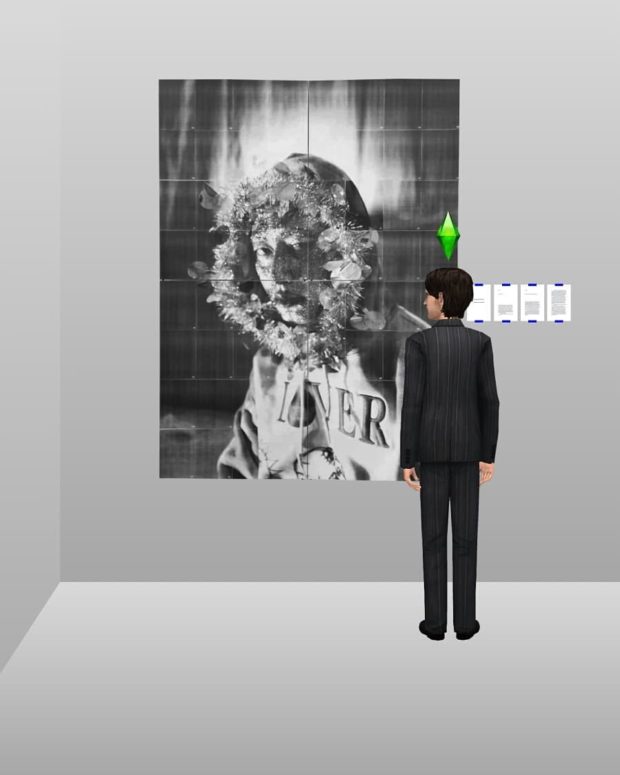
With The Lover that was a conscious turn. Actually I do remember when I showed The Lover it was shown with the works Water and Dead Fish Preserved, which were the sardine cans in a glass box. My friends of mine who went to the show didn’t know that those were my work, because other work I’ve done before that they’ve seen were the rocks and the soil. So what do you expect next? I think it wasn’t the kind of work they were expecting to see, which I like because I don’t want to be predictable.
So beginning with The Lover it became a lot more intentional, that it’s going to be a series, that apart from seeing the work unfold in a space, like a gallery space or a site-specific space or whatever, I wanted it to also unfold across time, meaning that sometimes I would do work that are just clues for the next work. Sometimes it’s more of like a backwards kind of thing, where… You know how they say art imitates life? Then you see a ready-made, say, a urinal inside a gallery? It started from real life and it became art. With, for example, the work Water, the idea for the water bottles presented like that started in the gallery first, as a kind of work inside a vacuum. It doesn’t really say or tell you anything, and then in “New Frontiers”, you see the function of the water bottles as a kind of votive. I don’t know what’s another word for votive, but something you leave at an altar or like at a holy place or something.

So in that way it functions retroactively, their function is revealed across time. In that sense the serial nature of it is more intentional and, again, whether or not you make the connections, for me, is not that significant. You could see the water bottles on their own and appreciate something about them, or you can see the work Ghosts Recorded By Technologies Across Time, with the water bottles there, on its own without knowing anything I’ve done before and, I don’t know, maybe see something there.

I was actually about to ask about Ghosts Recorded, you used soil in that one, too. With the water I remember we were talking about how the whole thing was supposed to be presented as something that was living, in the sense that it was implied that there’s a caretaker who waters the soil.
I want to go back to Andres Luna, the architect of First United, when originally it was not First United yet. Imagine this architect, building this place and thinking about this alcove underneath the stairs. That’s what attracted me to that spot. This little cupboard underneath the stairs is like the complete antithesis of the kunsthalle, or the kind of big art gallery. It’s like this inconsequential spot, but I do sometimes think about Andres Luna, building this building and thinking about this alcove and what this alcove will be used for in the future, or what significance, or lack thereof, it will have in the world. And it’s funny that we’re now talking about that dingy little corner. It’s an insignificant spot, but acknowledging its significance, how do you do that? How do you divert your attention from the grand Art Deco structures of Escolta Street to a little dark cupboard underneath the stairs?
https://www.instagram.com/p/CBRpy8tBNDi/
So I really began to imagine that spot as like a foundation stone, but instead of a stone, a foundational small patch of soil on which everything was built, and the goal of the exhibition, as it were, was to sustain the life of that little patch of soil. So the alcove underneath the stairs became a kind of incubator so that the soil remains alive. Of course whatever that means is another story, but that’s what really drew me to that spot. The spots we chose in Escolta, in First United were special. They’re like the opposites of each other, one was on the ground floor, this really small spot, and then one was upstairs, so they exist in opposite poles of First United as a building. But what I want to do with the exhibition is unite them and, I don’t know… They don’t feel so apart anymore.
The space downstairs was a broom closet and the space upstairs was… It’s mundane as well, it’s an attic used for storage just as well. But it’s not like we pass by it all the time, which we certainly do with the broom closet downstairs.
I don’t know if you remember, but the first time you showed me the upstairs, I immediately fell in love with it. I really loved it so much. I don’t know if you remember that moment but I do. When I saw it I thought, this is it! The ideas belong here, and then it’s crazy because it was so dirty, it was so messy, it was jam-packed with a bunch of things. But there was something about it that transported me back in time. I don’t want to say, but it really feels like it was for me.
I could completely get that actually. When I saw it I thought, “He’s going to like this one.”
Thank you so much! Because I didn’t know about it before, but I think that was what was great about it, because from our conversations you knew what I wanted, you knew the spirit of the project, and you brought me there. I guess that’s where curatorship comes in. These are things that I wouldn’t have thought of on my own, but when it’s presented, it’s now my job to respond. That’s when it begins.
I’m happy that this is really quite site-specific. To transport any of these would be… That’d be that big, it’s a bit of a hunt. Is that something you’d be interested in doing the the future, if you were invited to re-exhibit this work again in another place, would that be something you’d be interested in doing, a place maybe completely different from Escolta?
Yeah. For example I did the first Rock Catalogue in 2018, and then when I was asked to show it again this year in an art gallery, I did show it but it was something else. So I think if that kind of opportunity arises… The work is site-specific but I’m not. How do you put it in a radically different spot? I guess that gesture itself becomes part of the story of the work, this kind of transportation. This transportation is a very interesting thing, this dislocation. As I said earlier, retroactively you can really look at the work Water in the art gallery as a dislocation of an idea. Ghosts Recorded by Technologies Across Time was site-specific, but you have components, actually not all the same components, but one component of it, disattached from that and dislocated. So, yeah, I think that would be interesting. We’ll see.
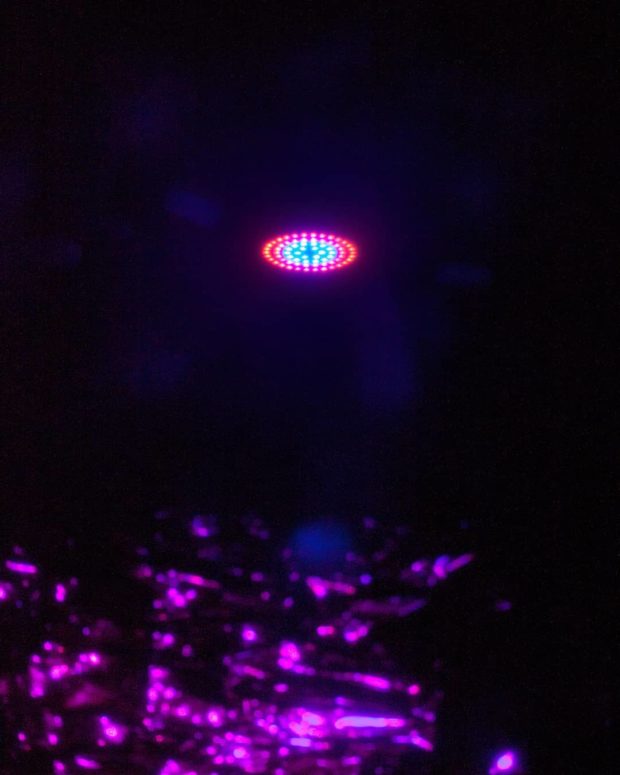
It’s quite nice to see where you started and see these ideas and processes start to grow as you went along, because it has a lot of echoing. It’s interesting, it’s useful to know that it’s not always like a super deliberate thing, ideas grow from projects conceived and executed in the past. That’s certainly something you did with the triptych in Limbo. Would you consider that a dislocation?
You mentioned deliberateness, I think they’re very deliberate to a point. For example the plastic canopy in The Remedial Bequest that is covered in dust, which was actually baby powder, that was deliberate. That was very deliberate to conceal it further, and that act of concealment wasn’t just concealment for the sake of it but concealment as a symbolic act, alerting the viewer that it’s hiding something. The reliquary object is empty. The Documentarist in Miller’s Planet, the film, shows it as having contents but the one upstairs is empty. I thought that you had to hide that, you had to hide that fact, because an empty reliquary is… An empty vessel does not contain the holy relics, and we have to hide that. There is a train of thought within the process where I don’t attempt to make deliberate connections, but when it comes down to the work itself it’s very deliberate.
With the Limbo triptych in particular, that work did start from a curatorial prompt. It was a group show that talked about trauma, trauma that can be inherited through generations, or a trauma that is not yours but you recognise. You, as the curator of the “New Frontiers” show, we never talked about that, but when I do mention it now it makes so much sense to look back at the work from that lens, because the “New Frontiers” show is really a lot of, at least for me, I was thinking a lot about grief. I was talking about the secret dream of this group of guys. Or I’m thinking about the faith you put in keeping the patch of soil alive, and the amount of care it needs to be sustained. All of these seemingly disparate things.
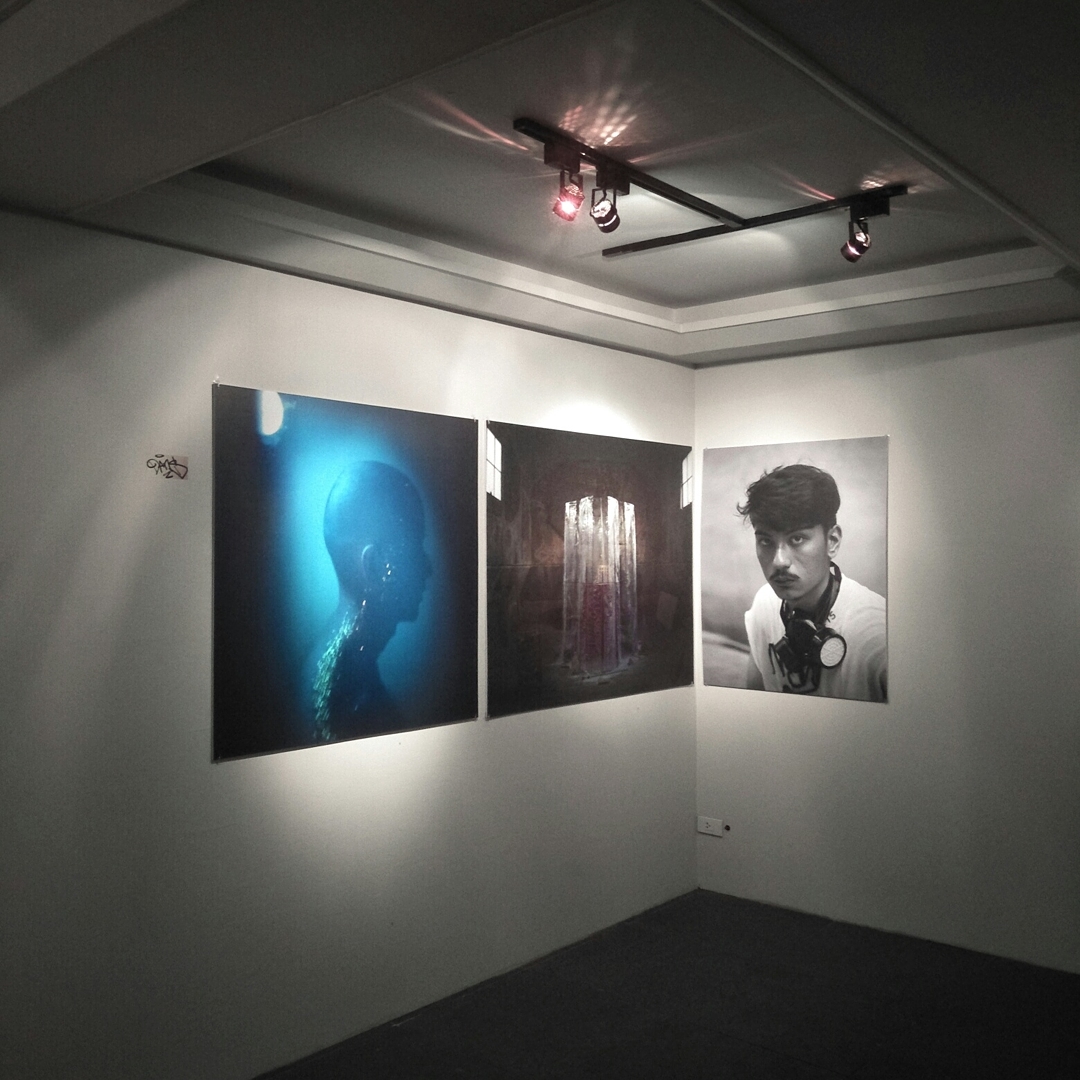
With the Limbo triptych it was really a chance to go back also in showing photographs. I think photography is a big part of my practice, so showing those photos that came from producing the “New Frontiers” show made it… I’m not sure, your question was, was it like an act of dislocation, right? Maybe? What’s interesting about showing photography is you can now show the site-specific work somewhere else, and its objecthood as a photograph informs that. What I mean to say is when you look at, say, photography of landscapes or interiors or people, it’s already culturally informed what they function as. For example you see a portrait of a young man, before looking at the content of the portrait, its being a portrait is already something. It’s already part of its identity as an object. Also its scale, it’s already part of it. You know how family photos are small little memories, and then of course product billboards are these massive things.
The Limbo triptych was also an attempt to really reframe some of the elements from that show and I guess further problematize it, honestly. For example in Part III: Miller’s Planet, you don’t really get to know any of the guys. You just see them, there’s five of them, you don’t really know who they are. And in the Limbo triptych you see one of them as a single portrait. It’s an act of dislocation, but at the same time also an act of making a new location, or making new foundations for that work.
I didn’t even get to go to Limbo to see that, when I heard about it, when I saw the pictures of the pictures, that was really fun for me to think about, because “New Frontiers” is a bit of a play in pretend, it was something imagined, the whole thing. Especially when we were doing the tours, we were trying to treat it as giving a tour of an imagined version of these places, like there’s a caretaker that takes care of the soil downstairs, there’s a reliquary upstairs, and to treat it as like a living thing, as if they are artefacts that were always there. And it was really interesting to me when you presented the photos at Limbo, because that’s what happens with actual historical sites anyway, there’s pictures taken of them and then the discussion around these places continues, when it’s in a book, when it’s in a magazine, when it’s exhibited.
Exactly. You basically explained it in a much more straightforward way than I could. That’s exactly what I wanted to say.
That was exciting for me because my mom has a collection of books about religious sites, and just sites in general, all over the Netherlands, all over Europe, and it’s fun to see pictures of these places you hear about. They’re so far away but it’s a means for you to be transported, and the same thought also occurs to me, I’m never going to be… These books are from the ‘70s, I’m never going to be in the Netherlands in the ‘70s!
With those photos, because one of the first things we talked about for the “New Frontiers” show was to imagine the act of going to galleries or the act of going to exhibitions as comprising somehow of coordinates. So there’s the visiting public, there’s the site, and imagining these coordinates as being a parallel of holy pilgrimages. So you have a bunch of people traveling and wanting to see this spot, that was actually one of the ways we talked about the show. In going to that exhibit, it’s like we’re choreographing a holy pilgrimage. Escolta is in the heart of Manila but at the same time you have to intentionally go there. It’s not like you pass it, I mean you really have to plan to go there to be able to be there.
Going back to “New Frontiers” a little bit, since we were talking about it being like pilgrimage site, and one thing I wanted to highlight and ask about also was the fact that there is a barrier for the reliquary, and it’s full of these things, like more of that pilgrimage stuff, and the thing there was that it was imagined pilgrims leaving things of meaning to them as an act of pilgrimage, just as an act of prayer to some extent, I suppose, and tribute. And you mentioned that you put lyrics of pop songs…
The idea with the barricade to that area was, on one level we also don’t want people to go there because we weren’t sure of the structural integrity of the platform. But also, as I said, thinking about the reliquary as an object, it’s meant to protect something inside it, right? There’s already that one layer, that’s the first barricade. And in contemporary art language, you put photos in frames or put sculptures in glass vitrines. In the same way, in The Remedial Bequest, there is that plastic canopy that is supposed to protect it. So that’s the second barrier. The sign “Do not go beyond this point,” it seems like the first barrier but it’s already actually the third. Then during the course of the exhibition when the door was closed and you can only see it through a peephole, that’s the fourth. It’s these layers of barriers that I think granting access to the work made it difficult. But at the same time we both know it’s empty, there’s actually nothing to see inside it. So in many ways these are actually really barriers for nothing.
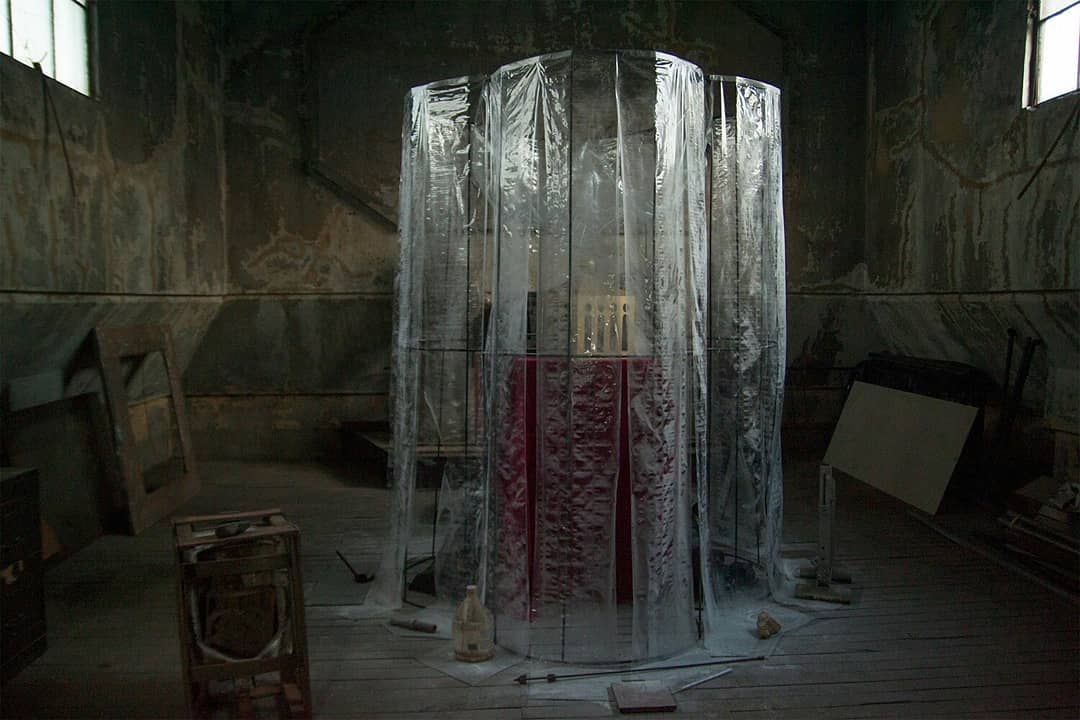
With the pop songs written on the little pieces of bus tickets, cigarette boxes, what I wanted to do was really turn that barrier space into its own thing, almost like a resistance against it. So it’s stopping you from going forward, but it’s also where you can leave something behind. The idea for writing pop songs… I remember describing pop songs or pop lyrics as fragments of humanity that are sufficiently vague but also very specific. Like if you hear a song you feel like it’s about you, and you feel like it’s exactly talking about your life, and then billions of other people think the same thing. For me that’s such a fascinating phenomenon. These pop songs, the way I imagined them, they represent very specific things but at the same time very vague things, almost like prayers. Sometimes you have very specific prayers and then you also have… You pray for good health, things like that.
Actually if I can highlight one song, one of them it says there “I don’t dance now.” It’s from a Cardi B song, I think it’s Bodak Yellow, right? Yeah, “I don’t dance now, I make money moves.” It’s kind of like this statement about, you know, I’m not the person who I was anymore. That’s what it says. This is something specific to Cardi B but also something we can say about ourselves.
Going back to your earlier question about interests, I really don’t separate interests from what is kind of like high art and, you know, pop culture, or whatever. They’re all the same to me. The categories don’t come first. But something else comes first, I don’t know what you call it… Some kind of non-cerebral recognition of someone else’s humanity. That’s what’s important.
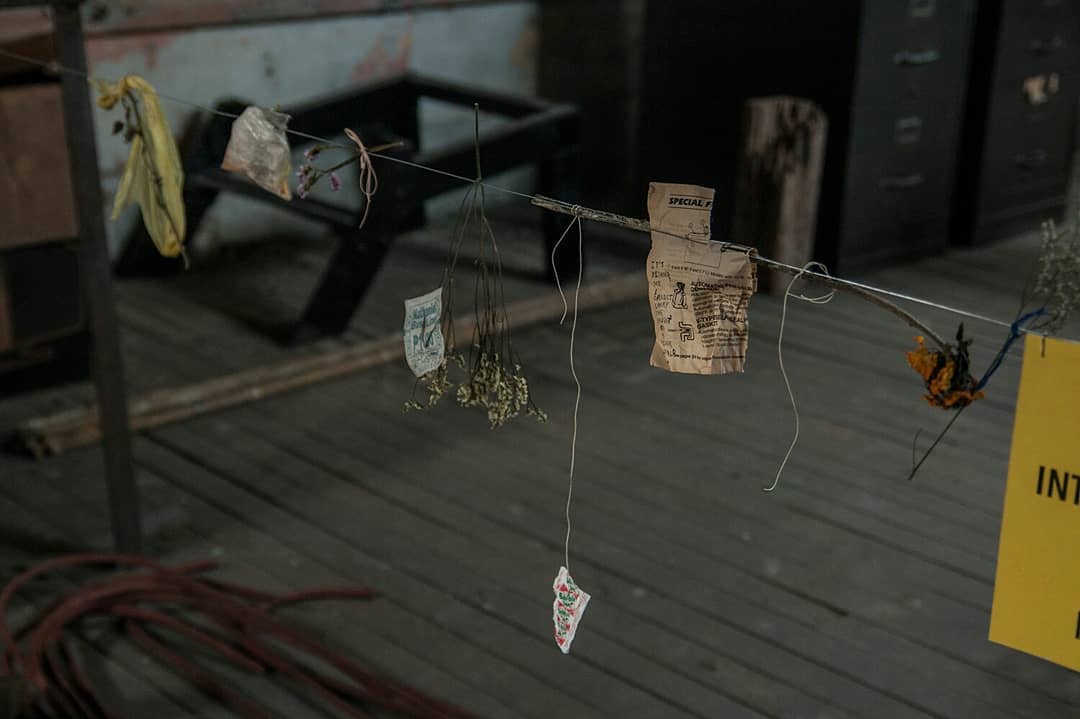
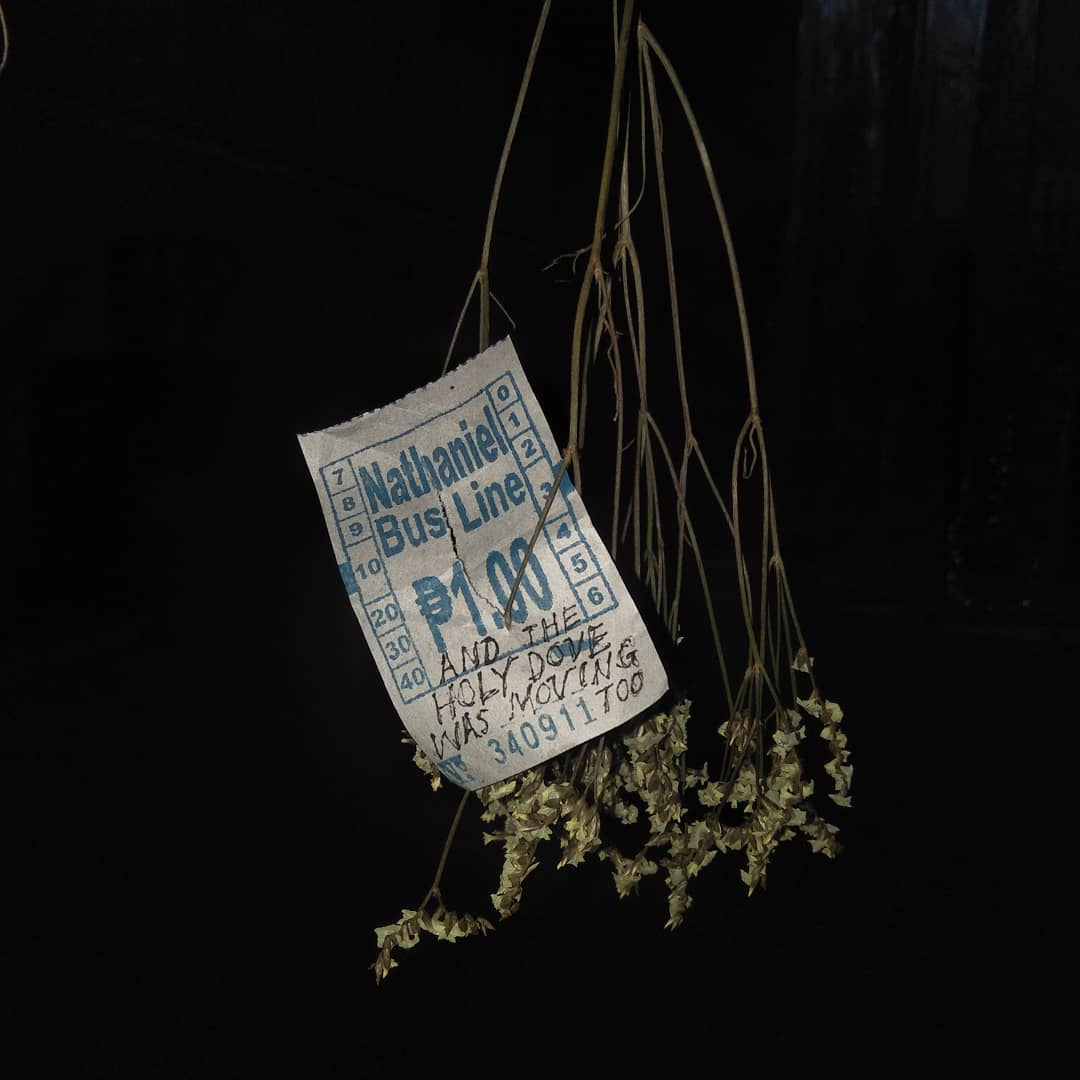
I just made this connection now, too, but I remember you saying that somebody asked you if you made the rocks, and it’s interesting because when you were setting up the reliquary, you made the dust!
Another aspect of the dust was the smell. The baby powder smell is such a familiar smell and I think it also makes for a slightly incongruous experience to go up there and it’s so dusty, but it somehow smells like baby.
That’s something that also happens with a lot of these pilgrimage sites, too, there’s this whole thing with these places smelling like roses. Roses here, roses there, roses everywhere, and it’s interesting that in your case it’s baby powder. Was that deliberate also, were you thinking about that?
Yeah. We talked a lot of about death in “New Frontiers”, right? And The Remedial Bequest in particular… When I showed the photo of The Remedial Bequest in Limbo it was called Shrine for the Living, because shrines for the dead are never really for the dead. They’re really for us, to remember the dead. So it’s a work about death, but I think what we associate with this baby powder smell… It also becomes a work about rebirth, because of the smell. Or it becomes a work that returns to infancy. So within the work is the beginning and the end.
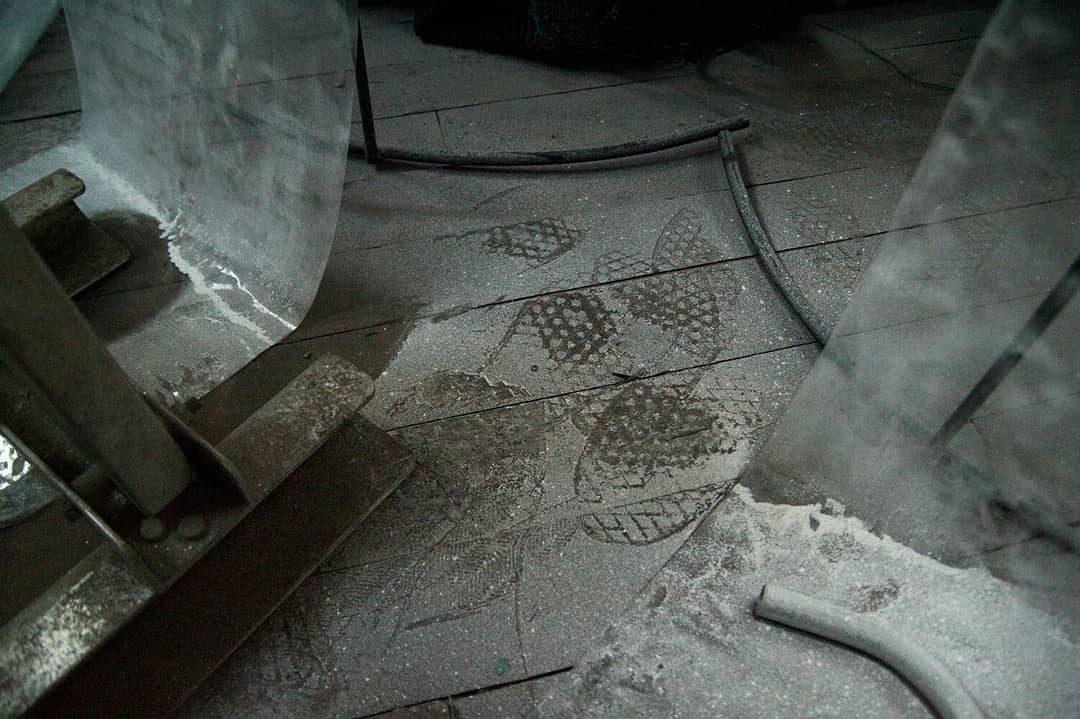
Let’s get back to Limbo once again. I’m curious, since the work was about work that had been done before, what kind of questions were you getting about the photographs, from people who were there and from people who weren’t there?
I remember being so exhausted during opening night because I talked to so many people. And then you have to talk louder because of the music. I did remember, for example, the first portrait, the first portrait is the figure of The Lover, if you recognise it, but the title of the photo was Angel of Small Death. I was asked if it’s a painting. I guess people didn’t really recognise it as a photograph, or someone asked me if it was CGI. It’s not, it’s a raw, untouched photo. The Documentarist in Miller’s Planet, Part One: The Lover was lit using blue light. Someone asked if it that was the moon. It’s not, it’s a blue bulb, or a bulb covered with blue cellophane.
About the middle photo, Shrine for the Living, I was asked if it was a real place. Of course the answer to that is yes and also no, right? I was also asked if it’s a miniature. That was interesting, because if you were able to go there and experience it and know the size of it in relation to the size of your own body, it’s fascinating that someone can see a photo and think it’s a miniature. For me that’s interesting. For the third portrait, Angelo, I guess people were just asking who he was. Because he’s not like… He does photography, I mean Gelo does photography but he’s not an exhibiting artist. Not very many people know him. So people wanted to know who he was. Those were questions I got asked. They’re fascinating because, for example, with the question of the real place, how do I begin to explain the yes and the no, right? It’s going to be a two-hour conversation!
This is not really about the work, but on Instagram you often open up the avenue for people to ask questions. When did that start? Since we’re talking about that anyway.
I kind of just did it for fun one time, and then I got a lot of questions from people I don’t know, then I realised a lot of them were art students. And so I thought it would be helpful to share perspectives on things and, in the process, also as a way of looking back at stuff I’ve done, and just rethinking about them, because you do forget them. It’s really useful to go back, and look at what you’ve done and try to see, try to look back at how the raw impulses could evolve into a very complex constellation of things that are beyond personal.
I think that’s what I meant, when I was asking earlier what are the interests that drive the work. Impulses. That’s a place where these things can begin, in terms of making the work, in terms of conceiving ideas.
What I want to retain from that original impulse is the energy. Sometimes you think of ideas and they seem great, but then when you look back at the idea, it sucks. But actually the energy from that moment of thinking about that is what I want to go back to. Maybe not the idea per se, but the naiveté from which the idea sprung, could be interesting. Or the amount of caffeine during that time, I don’t know.
I think we talked about this before as well, you were saying that the work you did originally, like your earlier work, is like… You didn’t quite say if it was like a version of you in the past?
Yeah I think I remember what I said. I think what I said was sometimes you do things… For example I did Compost in 2017, it’s been three years now, so I think it’s fair to say that I’m not exactly the same person I was back then, but whoever that person was, was onto something. That’s how I think about it, so it’s important to safeguard that idea or not to abandon that idea. I think that’s also where the serial nature of the practice comes from. It’s because I never want to abandon ideas that I feel aren’t yet… That I can explore, or that I left behind something.
Honestly I think everything I do is one big Freudian slip. I have some hope of what to communicate but ultimately what comes out is beyond me.
The way that your work unfolds, it’s almost as if there’s a wholeness to it, it’s a bit instinctive to you, is what I seem to be observing. The way it harks back when you move forward with the end of something new.
Honestly I think everything I do is one big Freudian slip. I never… I have some hope of what to communicate but ultimately what comes out is beyond me. I guess that’s why I hope you have more critics and curators to engage with, because honestly I feel like you could come up with more interesting things about what I do than I can. That’s what I mean when I say I don’t like explaining things. I can talk about things, if you ask me something about it, I’ll answer it, but it’s never like I’m explaining it because I honestly don’t know what it is. I can only talk around it and tell you a bunch of things and if you’re really intuitive maybe you can make connections. That’s what I hope happens.
Which is certainly what has been happening, like with the kinds of questions you were getting for Limbo for the triptych, and for everything, really.
Another reason I keep calling it “Limbo triptych” even if that’s not really the title, it’s like, you know, Limbo is “limbo” in two ways, so it makes perfect sense as a name.
The second Incomplete Rock Catalogue, at what point in the timeline was that?
So The Incomplete Rock Catalogue of 2020, it’s subtitled Broken Monument / Configuration Zero. I did that this year for a group show, it was a group show that included artists whose practices somehow involves collecting rubble. I was asked to do the Rock Catalogue there, so that was this year, that was in March in Art Informal. Actually when I was asked about it I was asked first if the Rock Catalogue is intact, and I just said, yes, and then I realised some of the components somehow got lost in storage. Basically I can’t build it the exact way. For example I can’t find the original floodlights and for some reason I was losing one of the planks for the shelf, and one of the original rocks. Then I realised at one point that I can show a different work and call it the same thing.
We were talking earlier about how when I did in in 2018, I was really thinking about it like it also functioned as a manifesto, so it would be also a great opportunity to, I guess in some way, reconfigure the manifesto. So Instead of, for example, building the structure upwards, the second Rock Catalogue work was built horizontally, instead of vertically. I was also looking a lot at the floor plans of Egyptian tombs, or drawings of Egyptian tombs. I think what they do then, they were meant to be for the Pharaohs right, and some of these burial chambers were small, so what they did was they took apart carriages, they took apart boats, to make them fit inside, so they can be used for the afterlife. If you looked at these drawings of these Egyptian tombs, they’re series of chambers and ante-chambers and passageways, and of course how the things were arranged inside had to conform to those specifics. The way the second Rock Catalogue work was arranged was like that, imagining an oddly shaped perimeter for it.

It was also the first time I made work that I didn’t know how it would look like in its final form, because I can’t sent it up at home. It’s a bit too big, so what I did was I tried certain configurations of certain parts and took photos, some of them I sketched just to see what they would look like, but the final form in the gallery, it just happened when we were setting up. Because I also didn’t know what spot I was getting and how big of a spot I was getting, so the work had to be adaptable in that way. One of the things I changed about that work compared to the 2018 version was, even if it was a still, unmoving thing, it was running on fuel. It was running on this fuel of carbonated beverage, basically of carbonation, sugar, you know, energy. So that’s where the energy drink component came in.
I think Art in the Park was going to happen shortly after so I also made work for Art In the Park before it got cancelled. The Cobra work was made using—I forgot what it’s called, I think it’s called “berry mix”?—it’s the red variant of Cobra. But when you dip paper in it, it somehow becomes pink. They’re very small, I think they’re about 10 cm. But I also envisioned them actually… I tried it also like as a large scale projection. It looks like a series of landscapes or pink sand dunes. Thinking about that sand dune thing, somehow it also still relates, I guess you could say thematically, to the Rock Catalogue as thinking about land, but not actually land, but liquid. So there’s that thing.
So that was in March, to answer your question. The funny thing about it is I never thought I’d mount [The Incomplete Rock Catalogue] again, but having been asked to show it again was also a great opportunity to reconsider what I was thinking back in 2018 and in many ways change my mind.
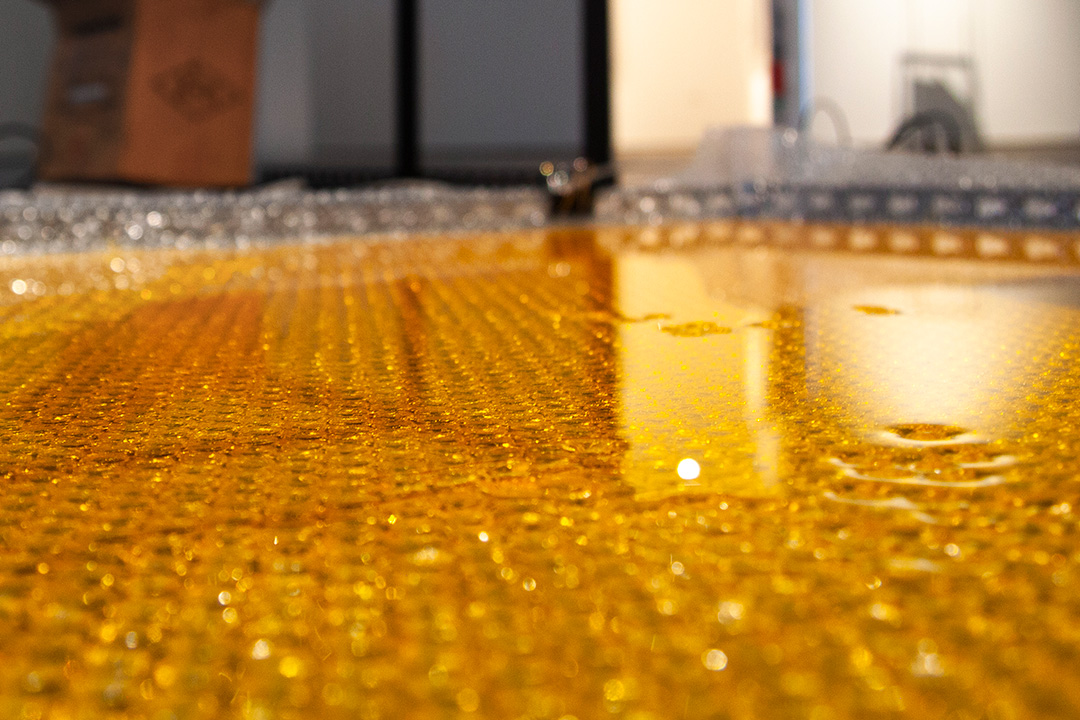
It’s quite amazing that there is such a visible progression in your body of work, that I think for the most part, largely, would you say, unintentional? It’s something that really just unfolds, the echoing of materials…
We were talking earlier about, for example, the water bottle works, and I guess on some level I was also thinking about water, but jacked. Like jacked water, you know. You know the milk, Bear Brand? They call it something… Is it fortified milk? So I was thinking about like a fortified liquid, but at the same time too much of it is poison. Or when I started to think about, for example, the water bottles as a kind of offering in the earlier work. I mean, even just the name “Cobra”, right? It’s like… I just remember you mentioned there’s “something Genesis” about the work? So I guess here’s the snake. I don’t know, I just thought of it now.
It’s fascinating how a lot of this is relatively unintentional, it’s amazing what goes on in the subconscious, like in terms of what ends up showing up and the connections you end up making, and making these connections without you deliberately doing so. Just thematically, a lot of it…
I mean, I never really engage the work thematically on the onset. It’s not like I decide these are the themes I’m going to talk about. I think it more has to do with… For example with Cobra, one aspect that I’m drawn to it are the advertisements, like narratives of an empowered workforce or visuals of masculine figures who are unfazed by exhaustion or, as I said, the weight of the world. And there’s this magic potion that they can buy.
And then for the Rock Catalogue work, the reason I called it Broken Monument/ Configuration Zero was because I was thinking about was it “configuration zero” in the sense that this is how it looks like before it was built? Or is this “broken monument” in the sense that this is how it looks like after it’s been destroyed? So it exists in like a limbo space, going back to that word again, like a suspended time-place when you don’t quite know whether this configuration is the past or the future. Is it telling you what things were or is it telling you what are things to come?
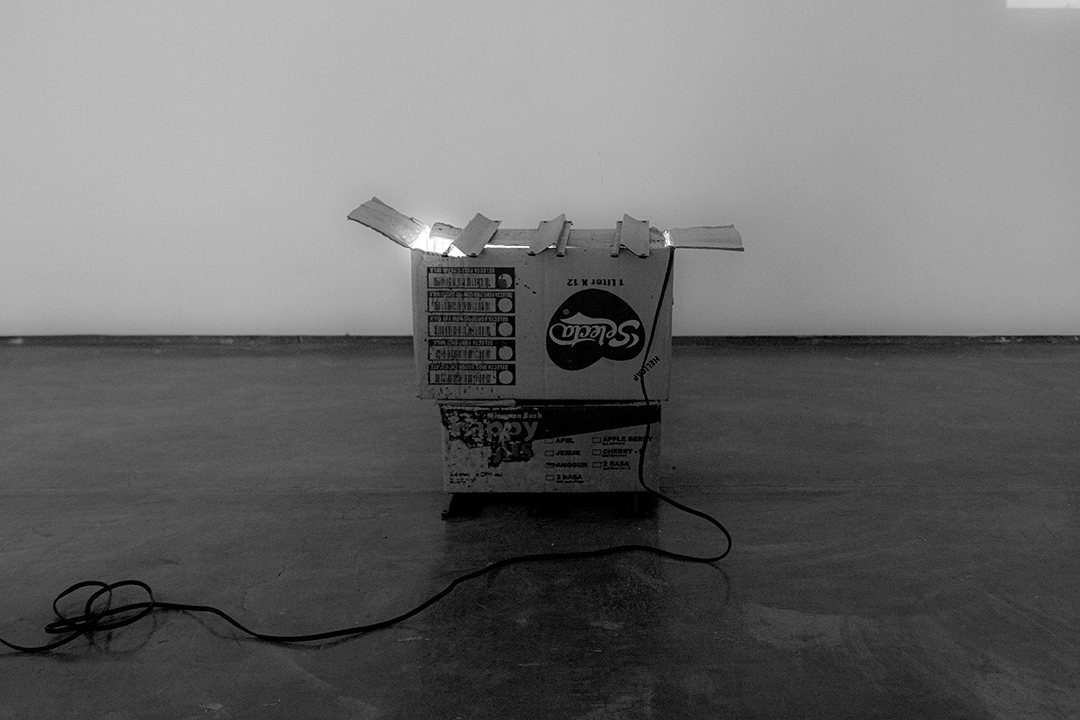
This discussion about continuity, these questions that seem to pop up in your work, about the past, the present, and the future, you don’t really go into these things necessarily with a very deliberate plan to connect, so it’s interesting thing to notice that there’s so much in your body of work that lends to a very easy piecing it together, a bit of a narrative, even.
I wonder… I wonder if it’s easy indeed.
I feel like for this particular body of work, when I look through your portfolio, it does flow. And when you look at it, it makes sense and because, you know, with art history and especially art historians or critics or curators look at a particular artist’s body of work, we’re always like trying, for one reason or another, we’re always trying to make sense of the timeline by way of thinking about through a lens of growth and ageing, sometimes, or things that influence an artist. A story shows up. You started with Rock Catalogue and that was a but more of like a question asked with no characters in it necessarily, and then when you did your solo show, all of a sudden there were human faces, there is a character there, there are these invisible people involved in the story surrounding it.
I do think about that sometimes, that aspect of how is the work understood. Ultimately I can’t say, right? I mean I do sometimes wonder, for example, if someone sees one work and sees another work, will that person sense the, as you say, the connection, or the… Because I don’t think so much about style. There is no… I’m not sure if I’m making an accurate evaluation of my own work, but there is no… The visual style at least on the surface doesn’t immediately jump out at you, or maybe it does, I don’t know. But I’m sure you know what I mean, right? Like certain people have very specific ways of working with a “visual language” as we describe it, like colors. I guess that’s what I mean, like colors, forms that are unique to them. On the whole I am less encumbered by this.
Actually style can very much be a crutch for some people who feel like they absolutely must conform to what it is they’ve sort of branded themselves as.
Yeah and actually so many friends… I’ve had several friends talk to me about that problem. This problem of style, like this question of, does it look like a work that I… Does it look like my work? That question.
I feel like it’s very much tied to… It’s something that comes up a lot when people talk about a body of work over the course of time, it becomes a big thing that some people feel trapped in…
What I want is freedom. I just feel like we are trapped enough as it is to further trap ourselves. That’s one of the things I was actually thinking a lot about, for example, in Godhood. Because as I told you it really started as a commission with very specific parameters. So you’re given this fragment, I don’t know, almost arbitrarily. I don’t know if there was like a purpose to which artist got what fragment. I don’t think there was like a specific reason, or I don’t think they tried to match it with someone’s personality or work or whatever. Maybe it was a lottery, I don’t know. So there are the parameters. For example if was a commission to do a zine, and then we were told about the size of the zine or how the zine is constructed. It’s a specific size of paper folded a specific way, and we were given like a number of pages to work with, and initially it was going to be just black and white, what’s why actually Godhood is black and white, because that’s what we were told at first. Then later on we ere told you can make it colored now, but at that point I was already done working with it. So only the cover is colored. There’s all of these parameters.
What I want is freedom. I just feel like we are trapped enough as it is to further trap ourselves.
If you think about it, these parameters are not just present in commissions per se, but in almost every project. Sometimes it’s a parameter that has to do with your own skill, or it’s a parameter that has to do with how much money you can spend. So you’re always working with these parameters, and increasingly that sense of freedom becomes so much more important. How do you break free from the parameters while staying within the parameters? And what’s a question I thought a lot about in Godhood, how much of the original poet will remain or should remain? And how much of it is me, as the artist, responding to it? These are questions I wanted to address in Godhood as a work that fundamentally uses someone else’s work, just relating it to that notion of freedom,
I’d like to think there is a visual style that emerges somehow. This is a visual style that also related to, you know, of course my sensibilities and how I work, and how I daw, my sense of, I don’t know, color, whatever, all these things. But I don’t have a rule book for myself. I don’t know if others do. I just know what some painters have like a color palette, or they have the premixed paints. I don’t have premixed paints.
Do you think that using objects the way that you do, does that sort of… Yeah I was asking if it adds, if it contributes to the sense of freedom you have in making things as you do? Does that make sense?
Yeah, I think maybe I can just… I should circle back to something I said earlier about categories, for example. When I work with certain objects they usually have, in some cases, they have a function within the narrative. For example The Remedial Bequest isn’t really a sculpture in the sense that it’s not like a sculpture that follows the long tradition of what sculptures have been made for. When I make something, for example when I work with an object, in my mind it’s very rarely like a proposition for sculpture or like an objet d’art, like a decorative thing that would look fabulous in a salon.
When I think about freedom in relation to the objects, I guess on one level maybe I’m thinking about the objects as an extension of the human body, in the same way that the human body poses many limitations for how the human being can live. We can’t be in two places at once, for example. But it also functions as precisely that mechanism by which we can exercise freedom. Like because of our body we can touch other people, or because of our vocal chords we can speak. So that’s the way I see these objects as, as an extension of the body. For example, the camera as a parallel to the eye, in a very different way but in some way, kind of. Or, for example the rock as something that poses the question of weight in relation to the strength of the body, for example. Or water as something that quenches thirst. That’s how I think about the objects I work with, I guess.
So you started with a lot of objects, we’ve been talking about objects, and when you did the Limbo triptych and Godhood, also the work that you did with the pink Cobra, it’s like we’re starting to look at images, flat images, things that are not three-dimensional. This is interesting to me, did you notice that shift?
You’re very sharp. I think at some point, going back to what I said about freedom, at some point I think I thought that I don’t want to be weighed down by stuff. Or, as I said earlier, is I was going to work with objects, they should be able to supply me with the freedom in the same way that they can function as an extension of myself. In some ways with those works I was thinking about that. Like, honestly, with the Limbo triptych, for example, they’re flat but, for example, Shrine for the Living doesn’t even fit in a small car. It just barely fits. So if you book a Grab, it actually almost squishes it. It doesn’t fit, it’s pretty wide. And sometimes I don’t like working in that way, honestly. Sometimes it’s so frustrating when, from a mode of art making, it becomes a question of logistics. But sometimes I also know the value in going through that process and what you can achieve when you follow through with all these things.
That’s very true, for example, with site-specific work. Like The Remedial Bequest took so much, like maybe 90% of The Remedial Bequest had to do with cleaning the place, and setting up the thing was relatively fast, disproportionate to how much time it took to clear out the space and think about what to do with all the stuff there. But it was worth it. Those invisible things are part of the work, but you don’t see it. Even with these works that are, as you describe them, flat and non-3D, I sometimes do think about the invisible aspects of the work that essentially make them good stories, as narrative objects.
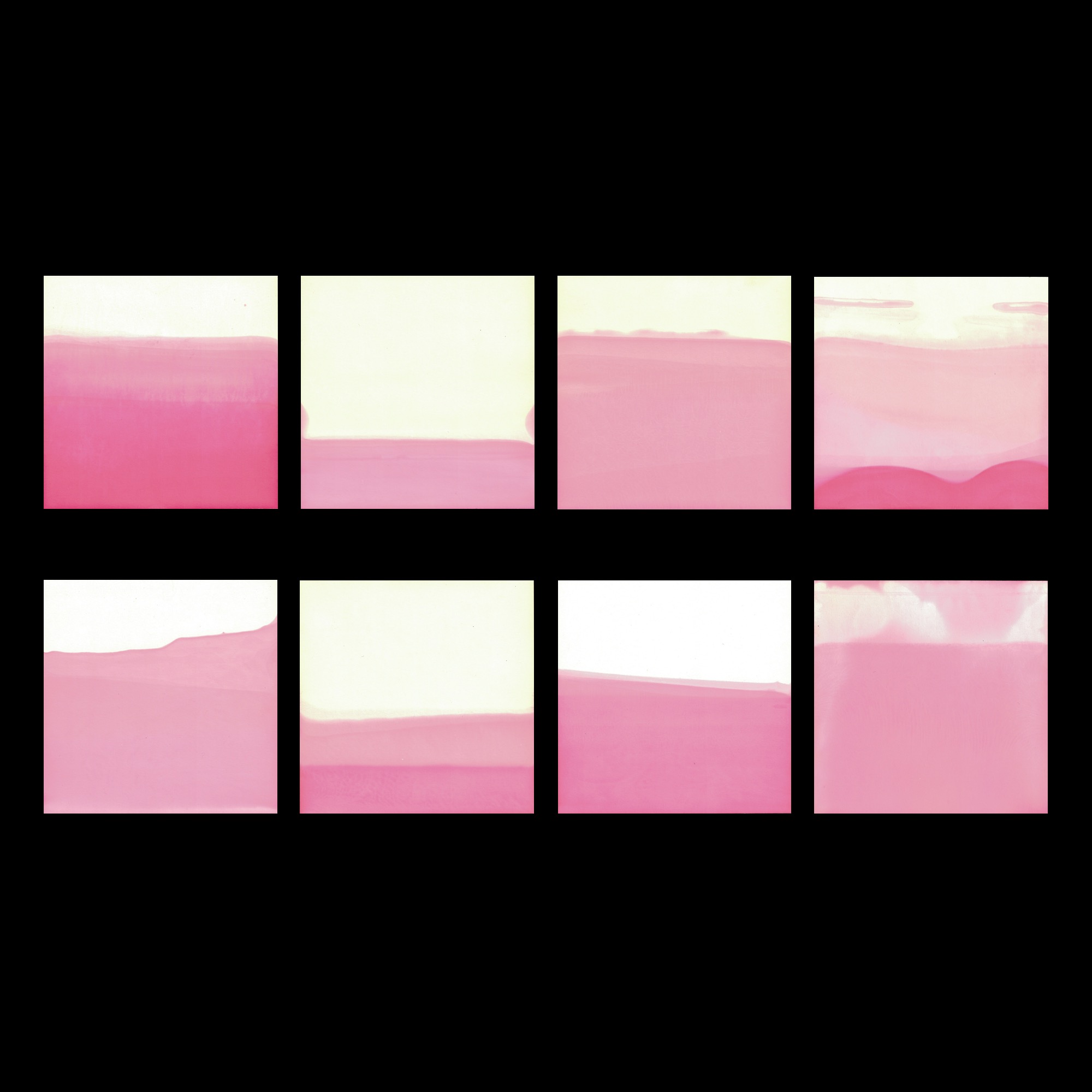
Like the Cobra work as a piece of paper is directly related to a state of wetness, sugar, sticky wetness. Even if that final thing is a mirage—that’s actually a word that I borrowed from a friend of mine who wrote beautifully about it. He was saying how the pink landscapes were a mirage and I just felt like, yeah… I guess that idea of a mirage is relevant to what we are talking about now, because you mentioned image. I guess I want to talk about image in relation to mirage, because usually an image is… The notion of an image has some exactitude to it, but usually when I work with images, it’s not really imagery per se in the sense of iconography, although I do sometimes think about that as well, but there’s that other side where imagery functions as a kind of impressionistic other, if that makes sense.
What would you say is the mirage in the Cobra work?
In a very literal way the mirage there is exactly the fact that you don’t know what it is if you don’t know what is is. It could easily be watercolor, or… I don’t know what it could be. But the reality of it is a mirage. I don’t know how much from a piece of paper that’s somehow inexplicably pink can possibly lead you, for example, to check the symbology of the energy drink. How much can you actually see there, and my conjecture is not a lot. There’s something about that insidious backstory that draws me to a very almost innocent looking piece of work. There is a part of me that is aware of what the work fails to communicate in terms of, for example, in relation to the beautifully written stuff about it. If you saw these works just completely out of context, what will it communicate to you?
When I first saw these, I’m not sure how—well it is called Cobra: Series One—but when I first saw them and saw “Cobra”, what I thought was they were like, for one reason or another, like microscope slides. There’s something interesting here, because like you’re using, maybe someone would say, Cobra as a medium, of paint.
Part of that work was really purely experiment. So I’ve never done it before. Series One is the first batch I tried, and that was it. Something I guess in the process attracted me to now knowing exactly how it will turn out. It’s different from how you have very clear expectations about how pigment behaves, for example, in acrylic or whatever. The way I did Cobra, by dipping the pieces of paper in a Cobra solution basically, was more akin to, at least in my mind, photography than painting. Personally I’ve never done it myself. I work with film photography but I’ve never done the developing, the film processing myself. I’ve seen how it’s done, so part of what Cobra is, is kind of almost doing that choreography of developing film in a dark room and having the same expectations, the expectations being, let’s see what images come out. In this context the image isn’t a photographic image per se, but actually a dye. A dye that ends up looking like an image. That was part of the process behind Cobra. That’s why they’re also that size because they’re almost like the size of polaroids.
What was like it, knowing that there’s a sense of mimicry of the motions—you can even say, the “performance”—of development? When you were doing this were you doing this in the dark room?
No I was doing it in our dining room. I guess Cobra is food, right? You say mimicry but I guess I would describe it more as a parallel movement, in the same way we talked about the “New Frontiers” show as a parallel to a holy pilgrimage, you’re almost doing the same movement, or doing the same things, but disassociated from the original “choreography”, I guess you could say that.
The sort of parallel choreography, did you go into the process intending to engage in that parallel or was that something you realized as you were doing it or after?
Maybe one way to talk about it is, you know how there are a lot of artists who describe themselves as process-based, right? I never considered myself as particularly process-based. Honestly if I can get out of talking about the process, I will. But there is a part in the practice where there are certain things I don’t do because I don’t like doing them. For example that’s one of the reasons I don’t like painting is because I don’t like sitting for a long time, looking at the same thing, for a long time. But I love looking at painting! I love looking at other people’s pantings! But I don’t see it as something I like doing, as a process, even if I love fantasising about being able to paint nicely. Another example, skateboarding. I like skateboarding even if I’m not great at it, but I like doing it, as an activity. That’s the extent of my process.
Since you did mention process, like some kinds of work being very process-based, when you first thought to do this, was it you sort of you trying it out, too?
What do you mean?
Since it is a dye and then you are working with paper, it’s a very process-based sort of object.
What I originally wanted to do was something closer to like a color field work. Originally I thought using the red Cobra would result in a red thing, like I don’t know it was going to be pink. I thought it was going to be much darker, just redder. I wanted to make something red, I thought it was going to look like blood or something. But it ended up this really soft, strawberry color that, honestly, I wasn’t going for. But as with photography, sometimes something else comes out. That very concept of working with the camera, the image you take has to do with how you set up the camera, what settings you use, like the aperture and the lens and all these things. That’s partly why I stuck to the Cobra work even if it came out differently than what I was expecting, because it became less of an intentional work, but a work that basically… What it reveals is inexperience or lack of knowledge about what actually is going to come out. It’s a very naive work in that sense. So opposite to showcasing skill, what it shows more of is lack of skill, or lack of familiarity with what the material will do.
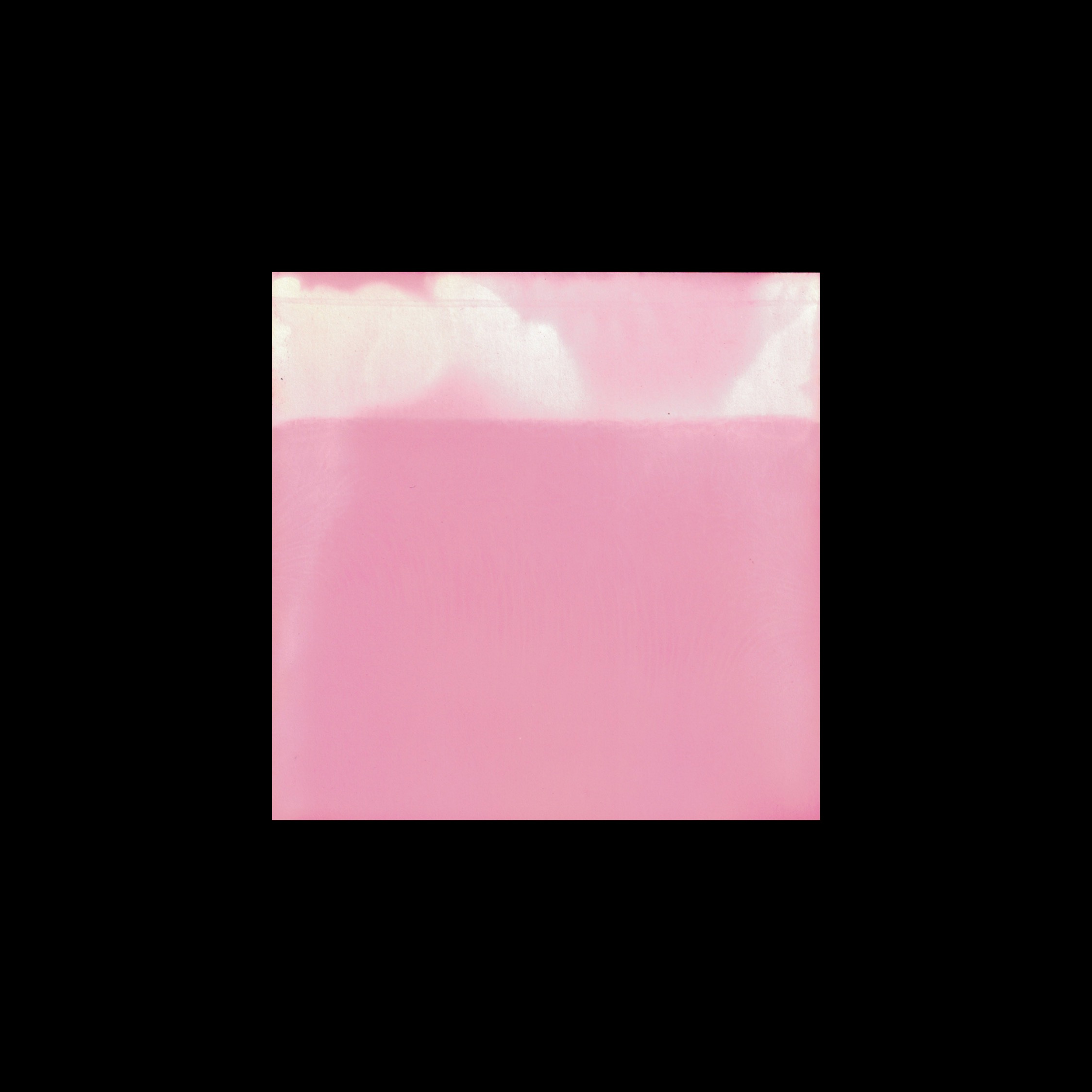
There’s freedom there, there’s a freedom in the shift, shifting objects, shifting mediums, shifting into a process, even.
Maybe I’d like to go back to our earlier discussion about deliberateness. I mean the truth is I do a bunch of things, not everything’s for exhibition. So the ones that do show are deliberate, even if they don’t come from deliberate origins. If we look at all of the other things I’ve done that never saw the light of day, I guess that’s a different story. I don’t know what we can unearth there.
Actually that’s plenty as well. That’s something that a lot of artists don’t talk about, what you do that doesn’t end up getting shown. And how much of that is there?
A lot. It’s a lot of drawings, also a lot of photos. I guess that’s why I delineate exhibitioning as a practice. I decided to pursue exhibitioning in 2017, but I’ve been making… I’ve been doing this a lot longer. A lot of these things I’ve been thinking about didn’t just start before the first show. But about how much of it is not out in the world, it’s really a lot. Some are collaborations that didn’t push through, there were those. Some are unfinished scripts for films, or notes for films, some are failed sculptures. There’s a lot of those things.
When you decided to exhibit did that influence the work that you were doing? Did it shift it in any way?
Yes, definitely, because I think the act of exhibitioning takes into account so many other factors, for example the exhibit as an event, or the aspect of an audience, especially with site-specific work. The aspect of the audience being in the site, that becomes part of the work in a way that a drawing of the work fulfils a different thing. The exhibition as an experience is part of the thought process now. That’s very much the case with the “New Frontiers” show. That’s why we did the tour and that’s why the sense of space was so important.
And Godhood… You engage photography again.
The beginnings of Godhood was really a commission to respond to the poetry of Cirillo Bautista who’s a National Artist for Literature, so he’s a poet. Let us not forget what the project so far has been called, it’s called “Immortal Poets”. I’m not making a direct connection but here we have another immortal poet. I mean he’s dead but his work is very much alive. It makes perfect sense for me as a continuation of the “Immortal Poets” project because, as I said, here is another immortal poet.
It’s a bit of a happy accident, the binding theme there was the work of another poet.
Of course you get invited to do a lot of group shows or group exhibitions, things like this, but I mean of course I can’t do all of them. Or some of them are dealing with things that I do not have enough time in relation to the deadline to really get into. But if you have group shows where you know there’s already this resonant thing inside it that I can immediately relate to…
Yeah, okay, I guess it would be useful to go into a little bit about Godhood.
So going back to its very beginning, it was a commissioned zine for an exhibition about someone else. So that’s what it was, that’s where the zine came from. They were setting up this exhibition about the life and work of this Filipino poet, and what the curators did was look at one of his books, called The Trilogy of Saint Lazarus, it was like epic poetry that starts from when the Spanish arrived, and I think the narrative of it stretches up to I think Martial Law, I’m not sure. So what they did was divide that book into 20 segments, and then give out those segments to 20 artists to make zines from them. I got a part from… I think it’s the first part of the trilogy, it’s called The Archipelago. So I got a segment of the book. When I was thinking about what to make or what zine to make, at some point I decided I wasn’t going to make a visual representation of the poetry, because I think ultimately poetry is untranslatable in that way. Or at least I wasn’t the visual translator for the job. So I thought what I would do instead was to read it, like literally read it, read it to someone.
The project is subtitled Reading from The Archipelago to an Audience of One. That act of reading poetry to one person became what the work was. The zine that came from it are photos from that exchange. So my decision in the end for how to do the zine was basically to record an instance where there are two figures in the frame. One person is reading the assigned poem to someone else. The entire recording of the fragment was maybe 30 minutes. In order to fit the page requirement, which was originally I think 100 pages max, only a hundred moments from the recording could fit, or roughly less than a hundred. Godhood as the zine conceptually contains the entire fragment, but because it’s only like 100 pages, it becomes fragments of the fragment. Within the newer fragments what I hoped to do was have it almost function as a new poem. That’s what the zine is.
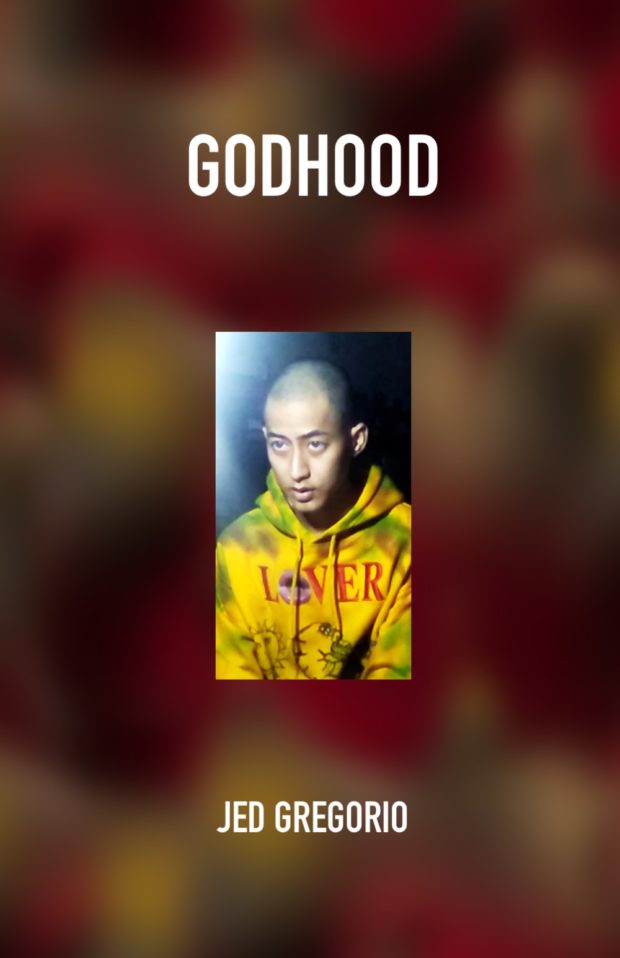
When I showed Godhood in Kyoto, there was a new parameter for it. The new parameter was it had to be… To show work that was going to be shown on a phone, and to a Japanese audience. When I was thinking about work I could show, apart from the fact that I was working on Godhood the same time I was invited to do the Kyoto show, I thought it would be interesting to… Because Godhood was shot on two phones—actually, three cameras, but, anyway—it was shot on a phone. So I thought it would be interesting to put it back to the phone, because that’s what the exhibition was calling for. And because it was going to be for a Japanese audience, I thought I’m going to work with someone to translate it, or translate the fragment that I picked out. So the Kyoto version had Japanese subtitles.
What I can talk about Godhood, though, maybe is its visual composition. Do you want… Maybe I could read to you a part of Godhood and… (I’m sorry, I don’t have it with me here but it’s—wait, I’ll see if it’s here in the computer so I just read to you a fragment. I’m not 100% sure but I think in that group show Godhood is the longest zine, because I think other people only did, like, eight pages. Godhood is like a hundred pages!)
Here—this part, it says: “You were in the wind, I think. With your hunter’s eyes, deciphering my tracks, the heaviness in my left sole, why I hesitated by a pond, and listened.” I love… I really like that line. So, for example, on those lines, I think I projected an image about friendship somehow. It gave me this image of someone looking on to someone else, and just from their movement, be able to, as it says in the poem, be able to sense a heaviness in their left sole, and know exactly why they hesitated. I think that’s such evocative imagery for me. That and other parts of the fragment I was given informed the decision how to visually compose Godhood, or informed how I was going to make Godhood to begin with. Because my first instinct was to read it and maybe, I don’t know, draw something? But, as I said earlier, after reading it I thought I’m not the visual interpreter for this job. I didn’t want to make a visual parallel to the words. Godhood is not really a visual parallel to the poem itself. Godhood is reading the poem as it is.
Another clue that may be helpful in telling you a but about Godhood were the other titles I was considering for it. After I laid out the zine I was looking for words within the poem that would be the title of the project. At one point it was going to be “The Men in the Boat”, because—this is something mentioned in the zine—and in Godhood there are these two figures, basically sitting on a yoga mat, and they look like they were on a raft, so I thought maybe it can be called “The Men in the Boat”, because it’s two men that look like they were somehow in this boat. Another title I was considering was “The Burden of the Silent Year”, because it’s very much a pandemic work. And then another one was “Far Away in a Private Sea”, because these two figures look like they’re far away somewhere, and they’re the only ones there. These were titles I was considering to call the work. In the end it was “Godhood”. All of these words were from the poem, and “godhood” was also a word from inside the poem.
I think “godhood” just had this sense of being extraneous and at the same time intimate. Extraneous because this notion of godhood is one that prescribes morality to society, to the outside world, but also intimate in the sense that it reflects your innermost beliefs, your biases, and your hopes and dreams. That notion of godhood, if you were of a more religious predisposition, I guess you could call it like a Creator or a Lord and Saviour, or if you were of amore science fiction disposition, this notion of godhood is a very advanced, other-dimensional civilisation that is post-human intelligence or something. So I thought “godhood” as this tag line for this project was what I wanted to name it because it also harks back to everything I’ve ever done.
I read the accompanying text in your portfolio about Godhood and you mentioned here that you wanted to know if “the simple act of reading can inject these words with a personal history and the subjectivities of identity.” That is interesting because… Would you say that the two figures are characters also, in a sense, or is it more directly you?
The two figures are not named. If you knew me, you would know that’s me. If you didn’t know that’s me, the most information that you can derive from the two figures is maybe their clothes or their appearance. So the figure that reads wears a tie-dye shirt that says “Glow Galaxy”, I think it says “Ultimate Glow Party Extravaganza”, something like that, like an old T-shirt. The other figure being read to is wearing a hoodie that says “Lover”. That’s really the only information available, apart from their physical appearance. I think as a work that was going to be shown abroad, where no one knows me, I think I also wanted the photography or self-portraiture and the portrait of someone else to function symbolically, if that makes sense.
On a very basic level these are two men, you can surmise that they are in this stage of their lives when they’re a certain age. They’re Asian, you know, all of these other things. And I’m thinking about the power of portraiture as a symbolic tool to reflect other things apart from itself. That’s also how I thought about Gelo’s portrait in the Limbo triptych, actually. He’s one guy but in some ways he’s also every guy, or a lot of other guys. And the two figures in Godhood I hope to function similarly. And if you juxtapose that with the words being read, you begin to get a sense of their relationship or, hopefully, the relationship of so many other guys who are close friends, or something like that. I never thought of us as characters in that way.
I remember in the curatorial walkthrough in Kyoto, in the Q&A someone asked about, were the clothes intentional, or something like this? They were intentional that I thought about what the characters were wearing, also in terms of photography, for example, I knew that we weren’t supposed to wear dark clothes because we won’t be seen, but also not intentional in a way that those are actually our real clothes, that’s what we wear. So, again, there’s that… Instead of delineating fiction from reality, maybe I want to highlight more of a reality and a hyperreality. The hyperreality exists more universally, and the reality is more particular, and they exist at the same time. We were talking earlier about tennis, right? And how we root for these guys. You know they’re real people but at the same time they’re characters. I guess it’s the same ting here.
And, again, I’m observing some really interesting progressions, because it’s another work where you’re handling a human person again, it shows up. It’s interesting every time a human person in… Like a character as a portrait, as what have you, it’s interesting every time it shows up. There’s a narrative here, too, in a sense. There’s a story being told, with the figures. In fact it’s actually quite interesting that you’ve referred to them as figures, and that’s why I brought up the character thing, to probe into that, I guess.
I’m also thinking about, for example, showing this abroad to strangers. I don’t have friends in Japan that I know of. I don’t think they’ll see me, exactly. What they’ll see is two figures, that’s why I refer to them as that.
And compositionally speaking, I just thought about this earlier, like as we were talking—Godhood and Compost, which are three years apart, are lit the same way, with one bulb. Godhood was lit with a stronger light, but there’s that aspect of looking at light. I remember there’s another line from the extract given to me, the line goes something like, “the curse of light more real in darkness.” What does it mean? I don’t know. But I think I began to think about the element of light, not only within Godhood, but throughout the body of work. Part Three: Miller’s Planet in The Documentarist in Miller’s Planet is also lit the same way. It’s partly about attempting to extract images in low light, that’s one.
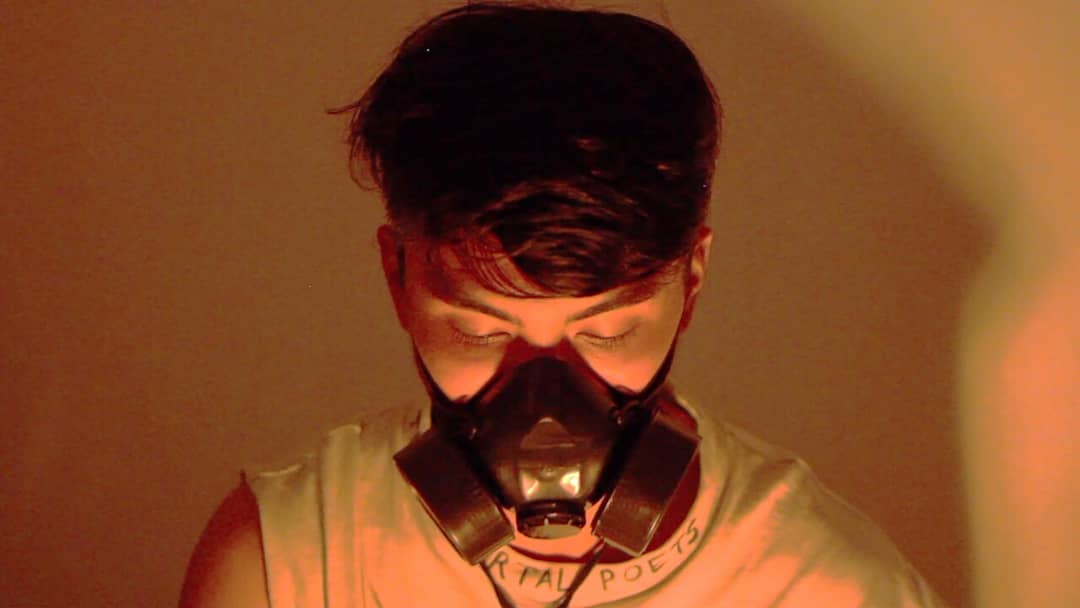
Is there a reason you try to do that, extracting images in low light? Since it’s something that recurs.
I have this relationship with light that I sometimes find difficult to explain or describe. For example, sometimes I dream of moments lit a certain way, I don’t know if that makes sense. Or I have memories of certain afternoons where it’s a very particular yellow. For example I remember that scene in Inception where Marion Cotillard woke up from… I think she woke up from a nap, and then it was late in the afternoon, and she didn’t know if she was dreaming or not, and that kind of started her madness. I remember it was bathed in this very deep yellow sunlight. And when I think of home, when I think of the house I grew up in, I also have a memory of how the house was lit, and how different places have different kinds of light. Just as an example I remember when I was a kid, the first time I’ve been to the Peninsula Manila, the hotel, I was in awe. I was like, wow, there’s a sun in the ceiling! And that light was so particular. It was a light from childhood. I’ve been there many times again, and it’s different. It’s somehow the same, but at the same time it can’t be replicated. So I think it becomes kind of like a memory of light, or a light that passed through the sieve of memory, of innocence, and all these other things. When I work with light in my own work it’s coming from that place. It’s coming from that place of grappling with light as a mystery, or sometimes trying to replicate light and failing.
For example with The Remedial Bequest, we did the tour in a very specific time frame. It was like around 4:30. I think what we did was we observed the previous days, how light behaves in that spot in particular times, so that’s when we decided to do the tour in this particular time slot, because that’s how the light lit the place. If you were a few minutes earlier, or a few minutes later, it looks different. That’s why, I remember, from Instagram, some people who Instagrammed the work, the place was bathed in this yellow. It was so yellow, because that was the time we planned to show it then. And then there were some photos when it was almost too dark, because it was going to be nighttime. I work with light in that way. Not only as a function of display, but almost using human memory as a vessel for the light, if that makes sense.
Among the people who went to the “New Frontiers” show, for example, everyone saw the same sculpture but I feel like everyone saw a different light, and because of that in people’s memory, it’s different works.
I’m thinking, Godhood, it starts out as a print thing that you do flip through, and when it was exhibited in Kyoto, that’s when it became a slideshow of the original. How do you feel about that shift, from something you have to have a hand in turning the pages forward to something that moves on it own?
Part of the plan for the zine was… Gerry [Gerry Torres] the curator opened the possibility of it being able to be downloadable, so people can print it or makes copies on their own. I thought if that was the case, apart from being a zine that you can flip through, like a physical thing, then it’s also going to be a PDF, it’s also going to be a digital file. And when you go through the PDF it actually looks like a slideshow anyway. So it wasn’t really that big of a shift. The bigger shift was the Japanese translation, I think. But in terms of it being a print thing and a video, the shift wasn’t so huge.
Let’s talk about that, the fact that there are Japanese subtitles. First, this is drawn from a poem of a National Artist. It’s written in English. That’s so many things going on. It’s several Filipino artists interpreting different parts of a poem that’s written in English, one ends up going to Japan, where it’s given Japanese subtitles. What’s happening, you’re right, there’s much more shift in the context in which it’s received, in that sense.
That’s part of what motivated me to do it, the National Artist thing, because, basically, what I imagined happening was this was really going to be butchered somehow. And I was like, yeah, whatever. I don’t want to seem disrespectful because I really liked the poem, but I thought, I want to bridge this great divide between National Artist and memes. So, actually, what I did there was, I worked with a friend of mine who wasn’t really a professional translator. He’s actually a DJ, so you he’s not like a literary scholar, which I thought was another fascinating layer to it, but what I did was, from the original fragments, I didn’t give that exactly to him. I actually did a provisional translation. I made another translation based on the text, and then that was what was translated into Japanese. There were some things I actually changed. I don’t think it’s very accurate to say that the Japanese text is actually a translation of Cirilo’s original words, because I actually changed a few things. Not a lot of things, but a few things.
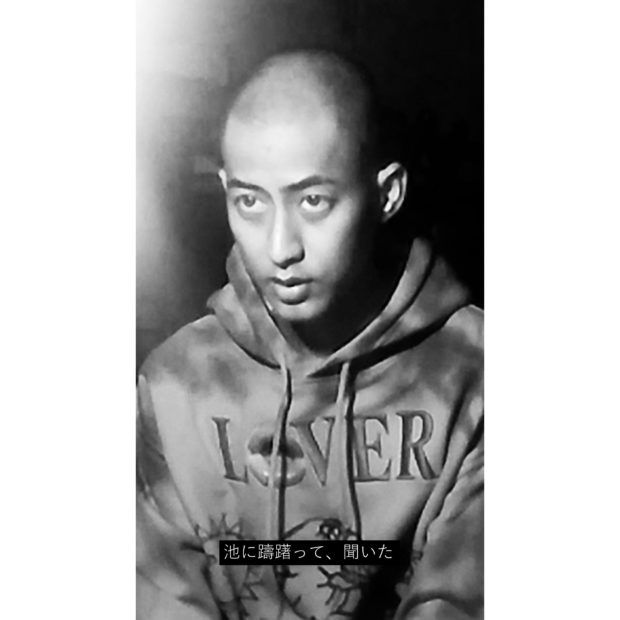
This is not actually an accurate term, but it’s like a localisation, and same with when video games get exported to different countries, you don’t have an exact translation. There is a context consideration. That’s a fascinating thing, because translation in and of itself, it’s a whole process that takes into consideration so many of these different things.
I remember watching this Youtube video about the different translations of Harry Potter and how… I don’t remember exact examples, but how I know there’s certain terms that don’t cross over so well from British English to Norwegian, or something. For me that’s so interesting. It’s almost a test imposed on authorial intent, and I’m interested in this idea of ownership. What do we own or what can we claim ownership to? I was thinking the same thing about the rocks, right, like do I own them, do I not own them? These are things I think about a lot.
You are borrowing a text from a writer, and an interpretation is… The question of ownership comes in, too. The fact that it’s translated, it just expands. You say it’s something you think about a lot, borrowing and ownership, like with the rocks, and with these words, interpretations. It was present in Rock Catalogue, it’s present in Godhood. Is this something that you see yourself exploring further?
Someone actually asked me during the Q&A in Kyoto if this was the first time I used someone’s text in my work. I said, yeah, this is the first time that I did it. But I realised that’s not true. I have another work called Choreography where there’s an audio channel that’s a text-to-speech recording of the Gospel of Saint John. That would have been the first, I think. It was written by John the Evangelist, and that work, it’s also being read, not by me but by the computer. Godhood wasn’t the first time that I did it. I can’t say to what extent that particular sensibility will show up.
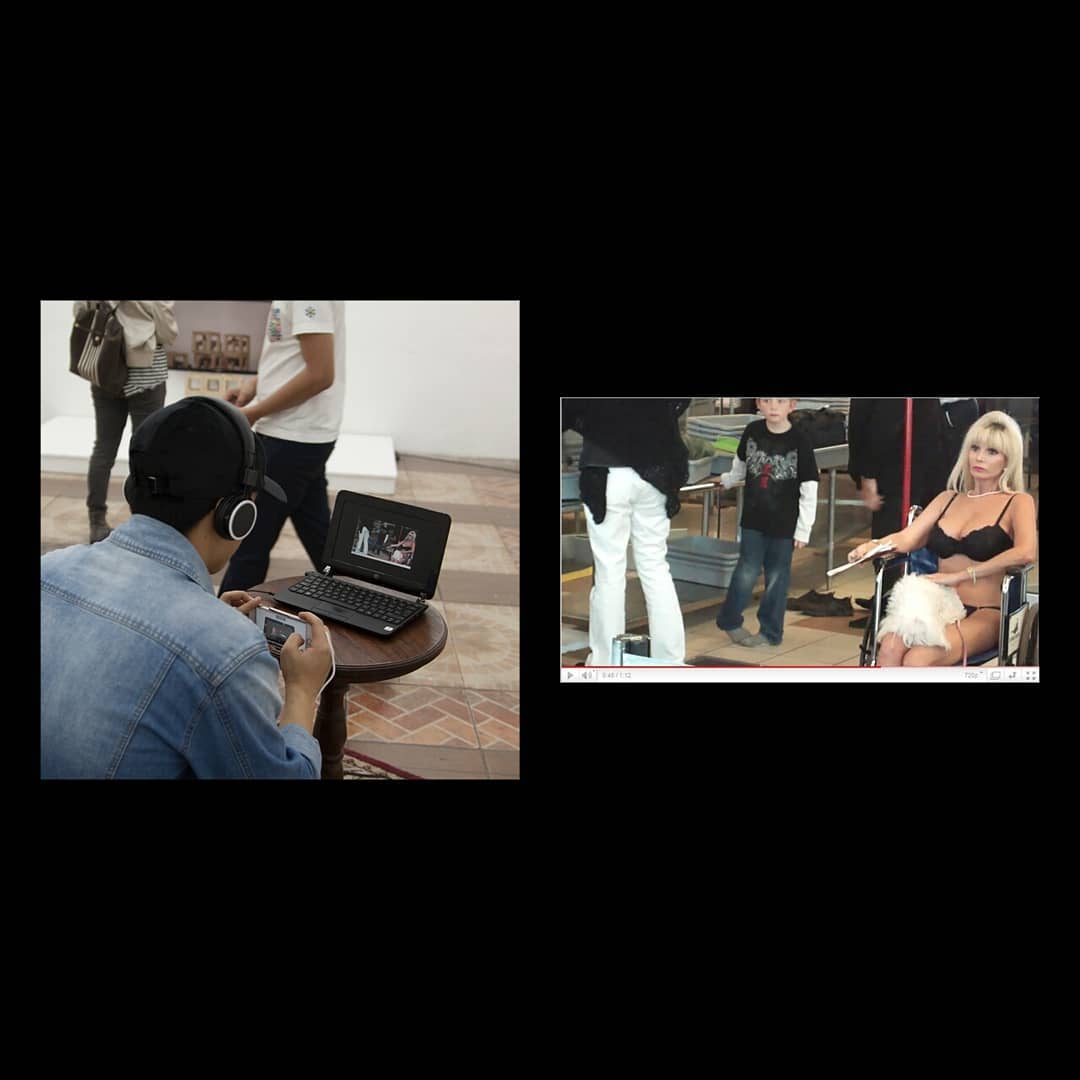
That notion of ownership is also important to me, not only in the sense of borrowing texts and things like this, but the ownership of culture. As a people with a colonised history, how we engage with that history of colonialization, and all of everything that’s attached to that… It is a very tumultuous space that is fundamentally difficult to deal with. But, as I said, being discouraged should not translate to being shackles, because then the cycle just repeats. And I don’t want… And I hate feeling that way. I hate feeling that there’s stuff I can’t do. And so the work now becomes about resistance. It becomes a practice of, what can I say is mine?
One of the ideas in Godhood was, when I read this poem, how much of it is now mine? Am I now part National Artist? Of course the answer is no, because you have to wait for the government to tell you that you deserve it, you have to wait for forces greater than you to give you that name. But my point is, I don’t care. I don’t want anyone to tell me who I am and who I am not. I want to work to reflect that.

It’s something so inane, if you think about it, but’s it’s a healthy way to approach work as an artist. You just explore those kinds of interests, because those sort of Wikipedia rabbit holes that we get into, inform so much of the work that we do, and I feel like for a lot of younger artists who are just getting into the whole thing, they’re presented with so many pressures because of popular ideas surrounding what art making is in this day and age.
You mentioned Wikipedia rabbit holes, I often do think about how much of that is essentially characteristic of a generation. Accessing information in that way, with such immediacy, with such readiness, and also with such infinite hyperlinking of ideas. We know from observing history that people within history are oblivious of it. This is something I think a lot about in my work. I guess you can describe it as a kind of hyper-consciousness about our place in time, and also sometimes the alienation that comes from that. Sometimes feeling that you are observing what’s happening around you from a distance but in fact you’re embroiled in that hot boiling bubbling soup of incongruence, and this mix of things, both suffering and inordinate amounts of pleasure that, for some reason, can exist in one place. It’s somehow hard to understand how that’s even possible. And it does make you think about where you are, who you are, and your place in that whole cosmology. These are things I think about. I don’t know honestly to what extent it crops up in the work in an effectively communicable way, but if you were to ask me what’s at the crux of the project, maybe it’s these things. It’s hard to describe, but it comes from a place of just trying to figure things out and trying to make the confusion instead of paralysing, trying to make it generative, as a synonym for creativity.
Your work, it certainly feels very much is exploratory. There’s a lot of going into things undefined and discovering in the process of making. I feel like the popular idea toward art making is that you are there to create a product. I think that’s what prevails. At least people who aren’t necessarily engaged in art, see it like you’re making a thing.
I agree with you that a lot of the work is a kind of exploration. I think for me… How do you say it, like… For me art making is like a profession of faith, and each work is an article of faith. Each work contains everything you believe in, condensed into one tiny thing, whether that thing be an object, or a gesture, or a photograph. That’s why I said you really can’t help but be vulnerable because I honestly don’t think you can hide anything when you make art. Going back to our earlier conversation about the notion of barricades and reliquaries and dusted canopies, these are all gestures to hide something, but I honestly don’t think they hide anything more than they give you additional information that something is being hidden. Because I think in art it’s impossible to hide anything, that’s really what I think. Everything comes out, in ways unexpected and sometimes maybe upsetting, sometimes maybe, I don’t know, satisfying or fulfilling, or fun. When it’s fun, it’s great, right?
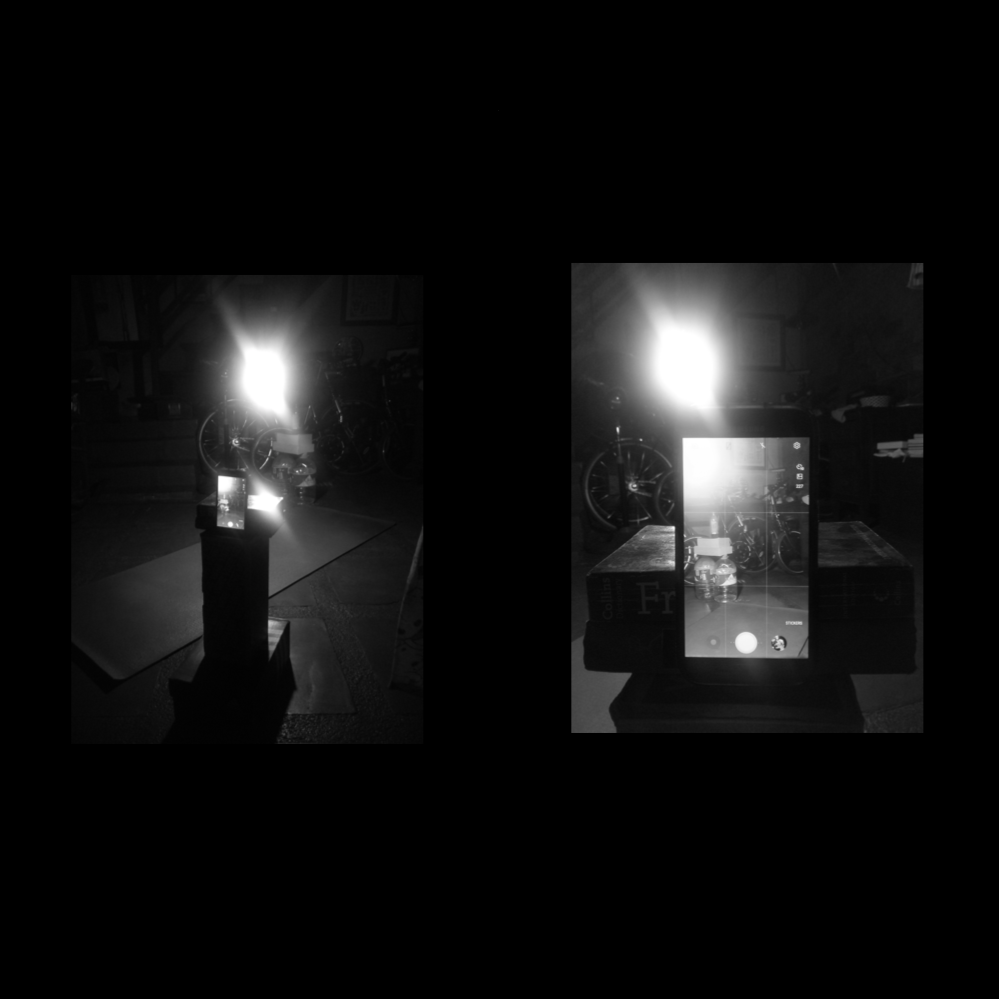
How many artists actually talk about how fun this is? Do we use that word much often? And if fun isn’t the right word, there is joy in the process, and there is that tick.
Juxtaposing that notion of fun with un-fun things we’ve talked about earlier, like grief or death, obviously these aren’t fun things. Or talking about them isn’t fun, per se. But I think every small achievement is a humble achievement, in a way. Being able to… I’m finding it difficult to make the connection, but when you’re dealing with trauma, for example, when you’re dealing with the suffering of others, it’s not fun, that’s not the point. But when you are able to, that achievement, however humble, or however small, is a step toward the right direction. I’m totally content if the body of work is a series of these steps, because I can’t really predict the future. I mean, I can kind of have a vision for the kind of world I want to live in, but ultimately you go about that in ways that you know how. And in every small decision you try to make the right one. And that’s the most you can do at any given time, I think.
I was actually trying to lead into that question, actually now that I think about it, I might as well just jump into it: What is it that fuels the impulse for you to make?
You know that’s such a tough question, because of course it really makes you look at yourself and try to say as best or communicate as best you can what your intentions are, what your motivations are. The thing is, for me, what art does to the world… It’s definitely more difficult to describe our outline, because if you’re talking, for example, purely about people, there’s billions of us, but I know what art does to me, how working in this way, what it does to me, at least. And I know what it does to me is it gives me, on one level, an avenue to exercise freedom, that’s one.
I don’t know if it’s just as an artist, or as a human being, you always want to communicate. One of the worst feelings in the world is feeling alone. I just remember there’s something Steinbeck said, it goes something like, “Out of loneliness we’re trying to send signals out to a distant star,” something like this. That’s true. As a human being you always want to be communicating. You want to tell people stuff, you want to hear stuff from other people. Art then becomes the question of how you do that. Because sometimes it’s not just words, it’s not just gestures. Sometimes it’s a site-specific installation, sometimes it’s a video. I think ultimately that’s where it all comes from, this feeling of being trapped and wanting to be free and attempting to find ways how to break free from everything that’s pulling you back.
On a very general level that’s where it comes from, but I think as long as the human being is alive, and life goes through its ups and downs, and the vicissitudes of life, the constancy of change… In terms of art, in terms of themes, or concepts or whatever, those are also constantly in flux. What is unchanging is that need to communicate with other people, just to remind yourself that you’re not alone, and then also to remind other people that they’re also not alone.
That answers the question, certainly!
I wonder if that’s the outro, no? Maybe we can attempt to smoothly outro out of this, like maybe we can play a piece of music that I like? Starting right about… Now?
PHOTOS COURTESY OF JED GREGORIO
PORTRAIT OF JED GREGORIO BY PAOLO CRODUA

